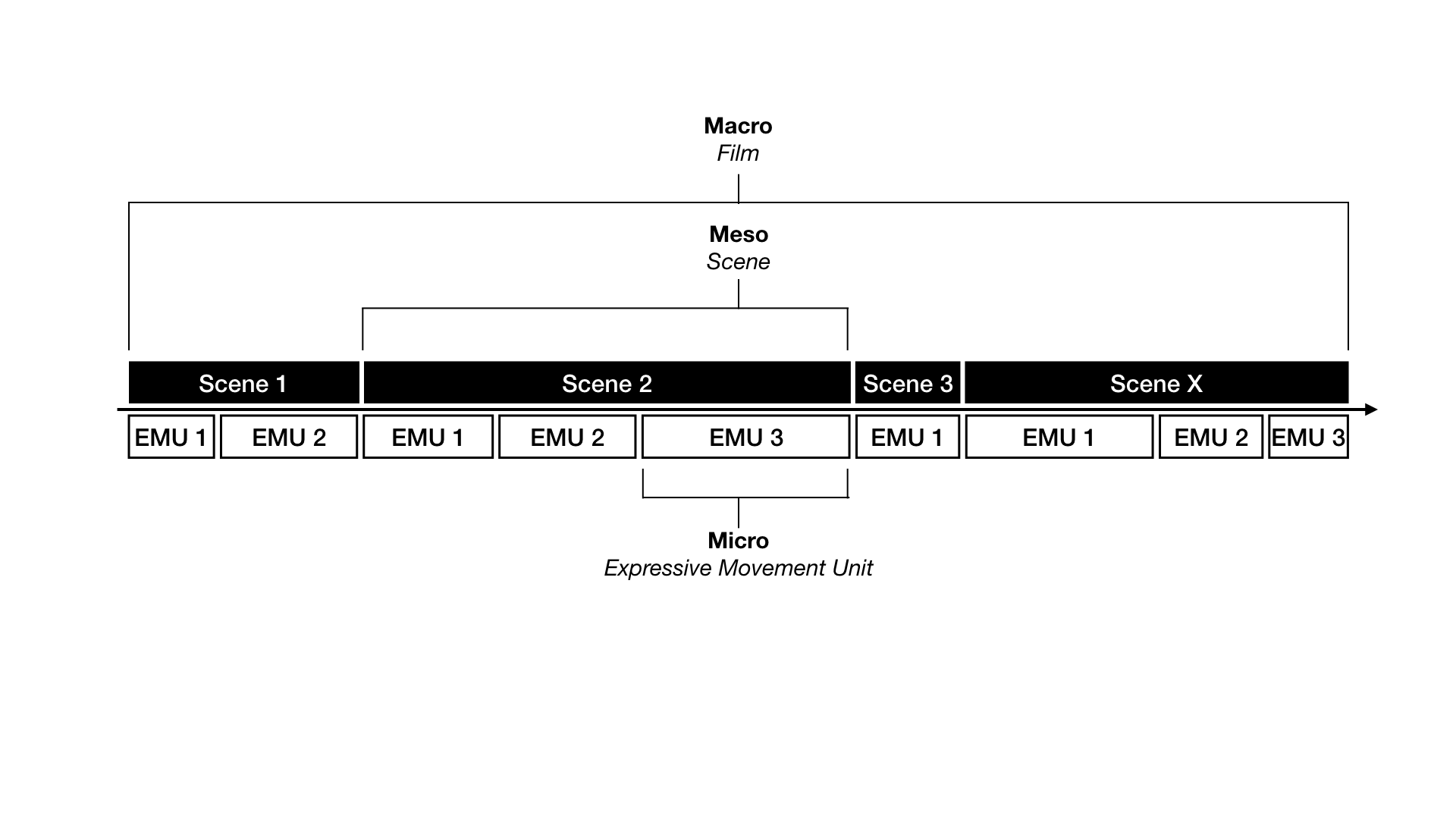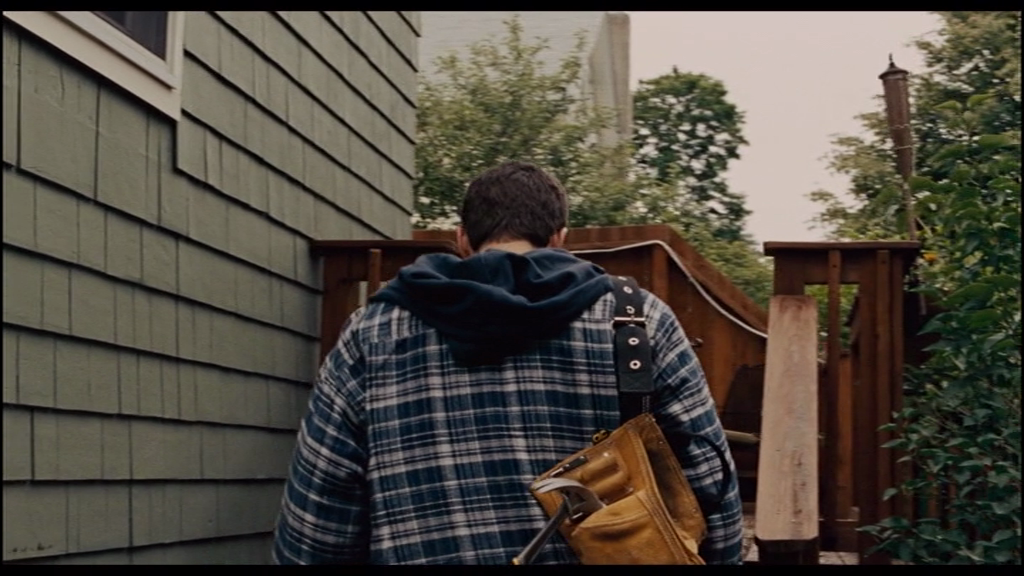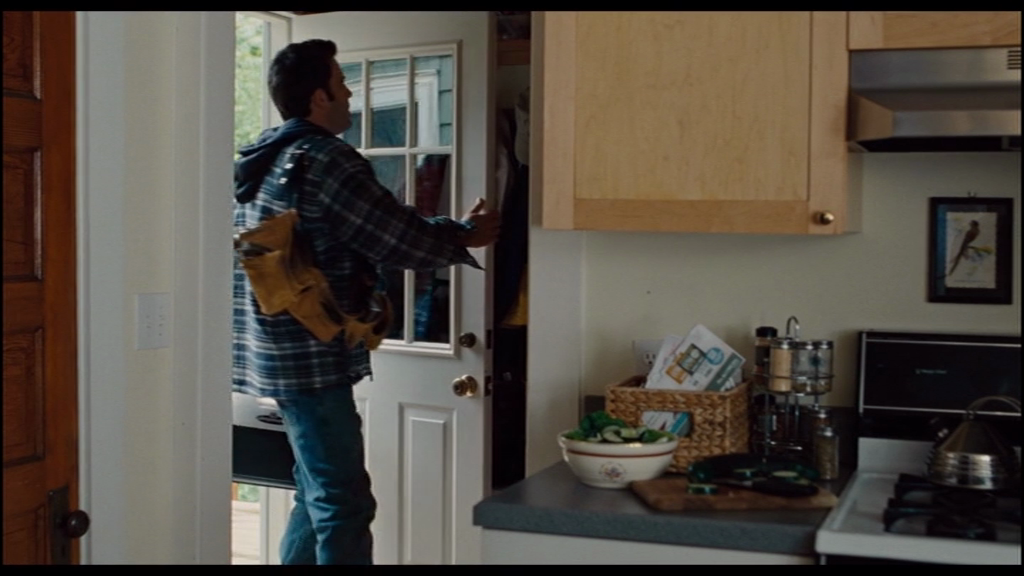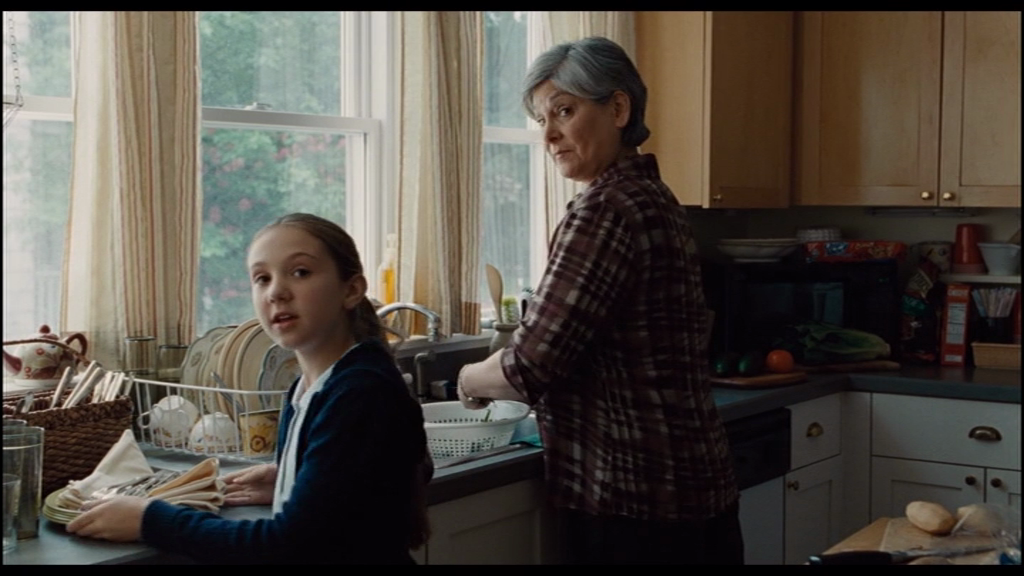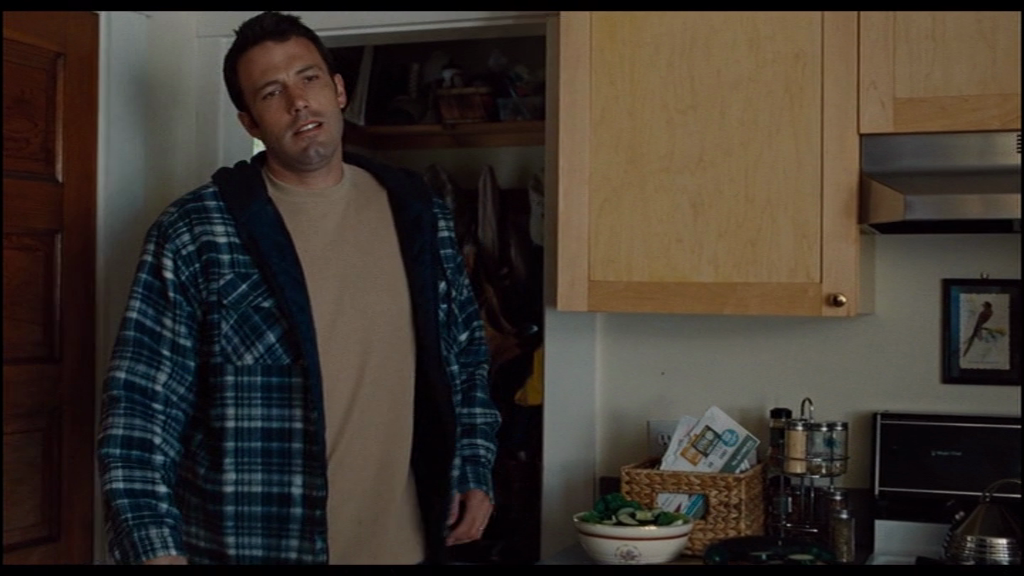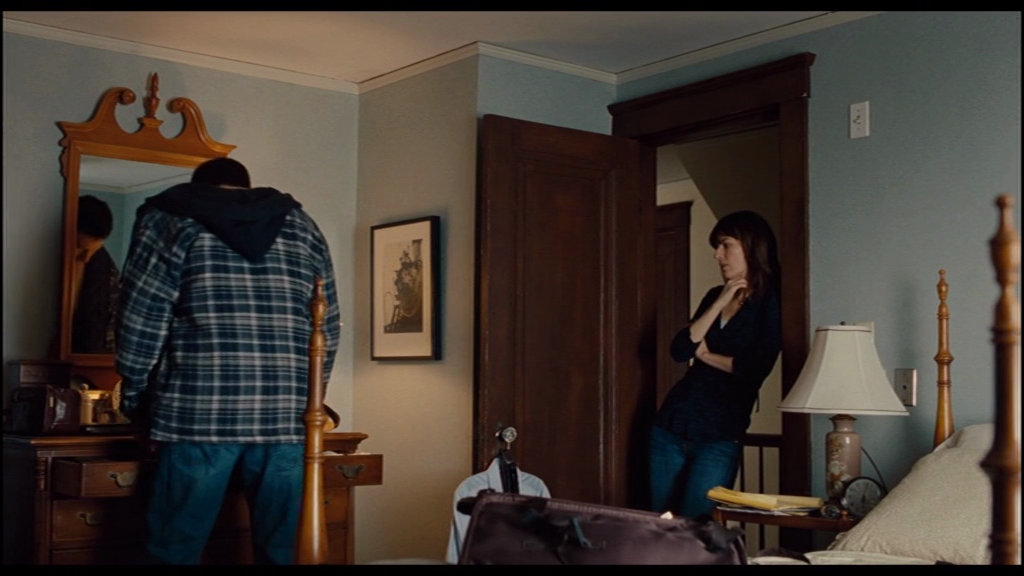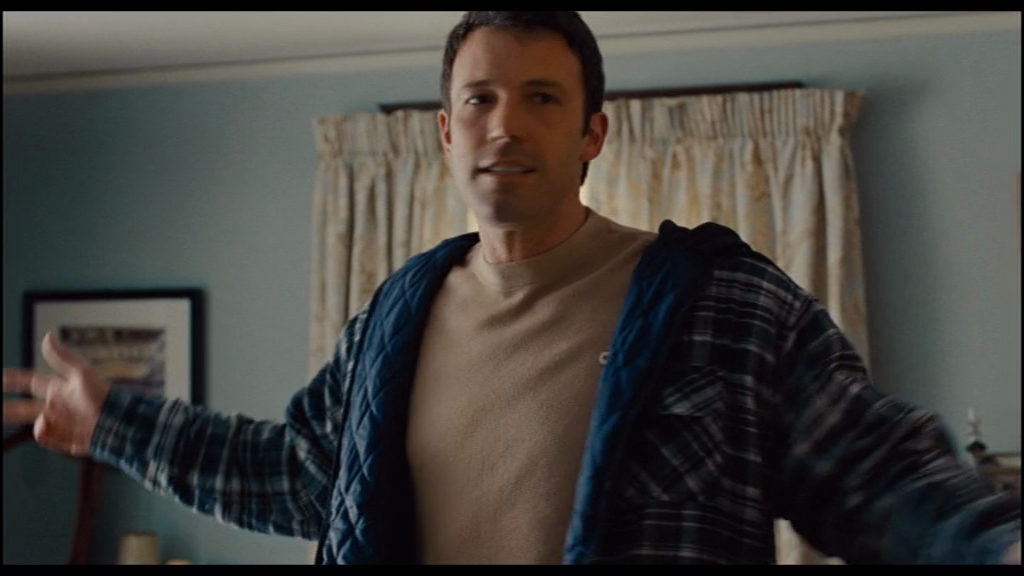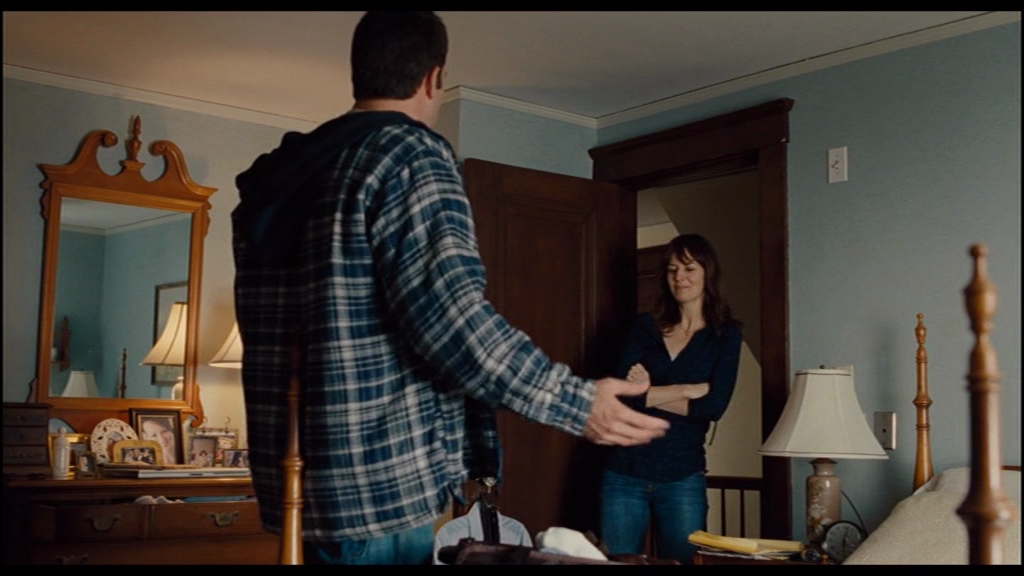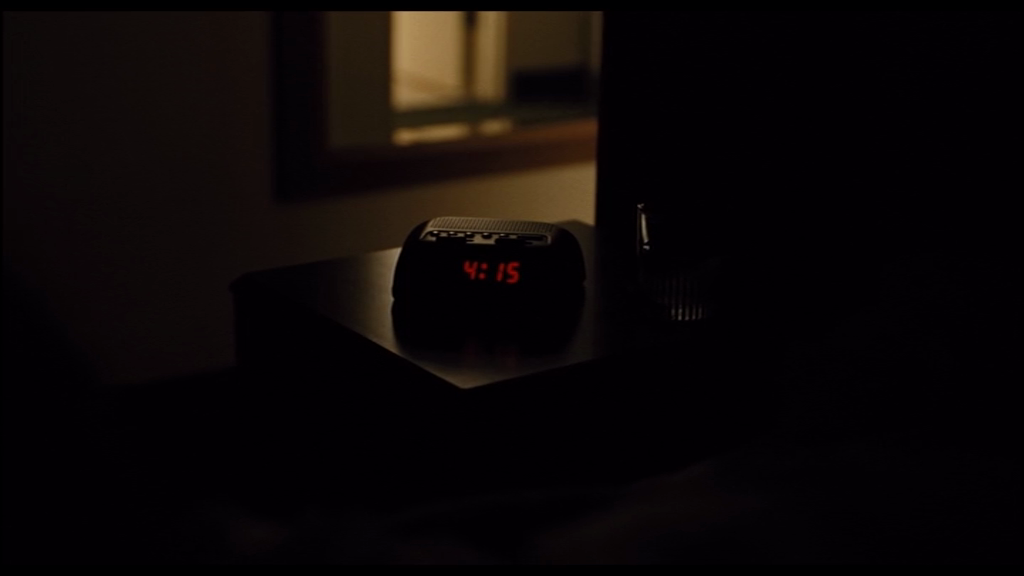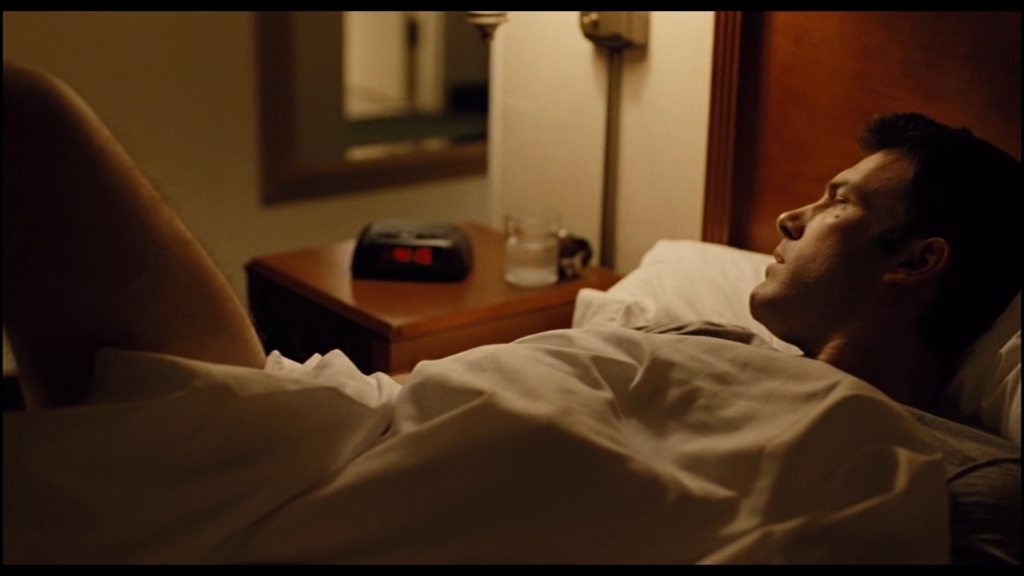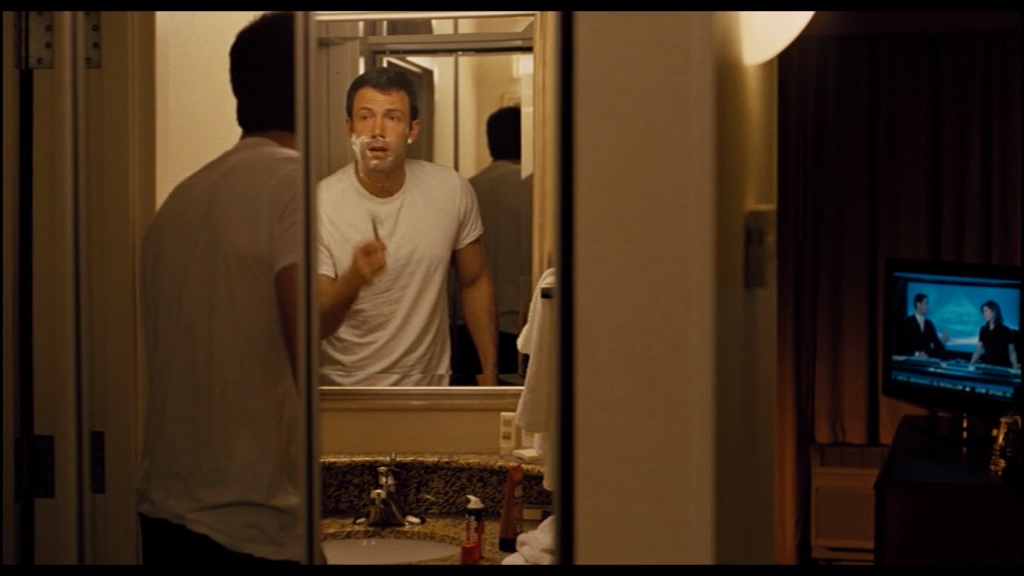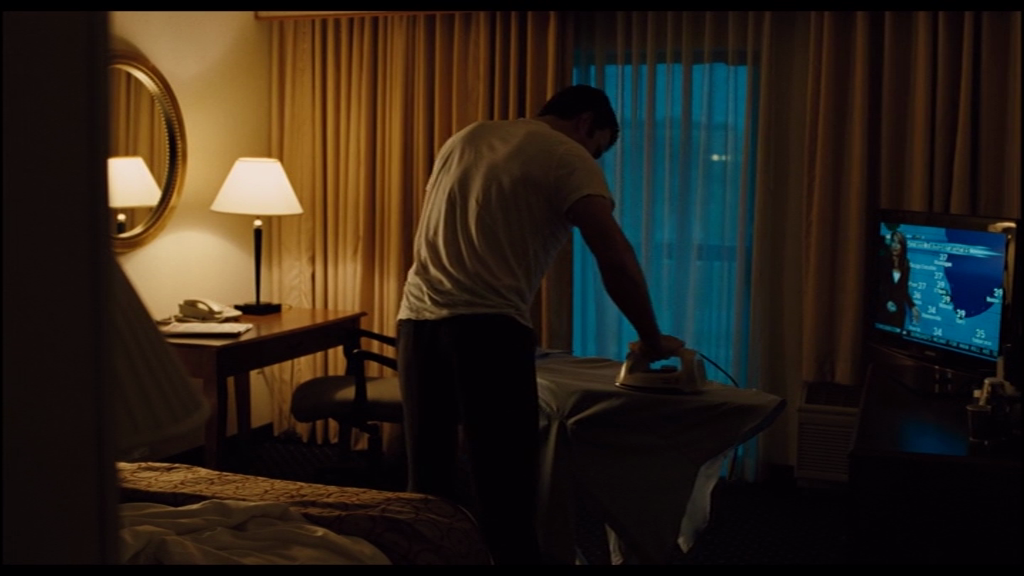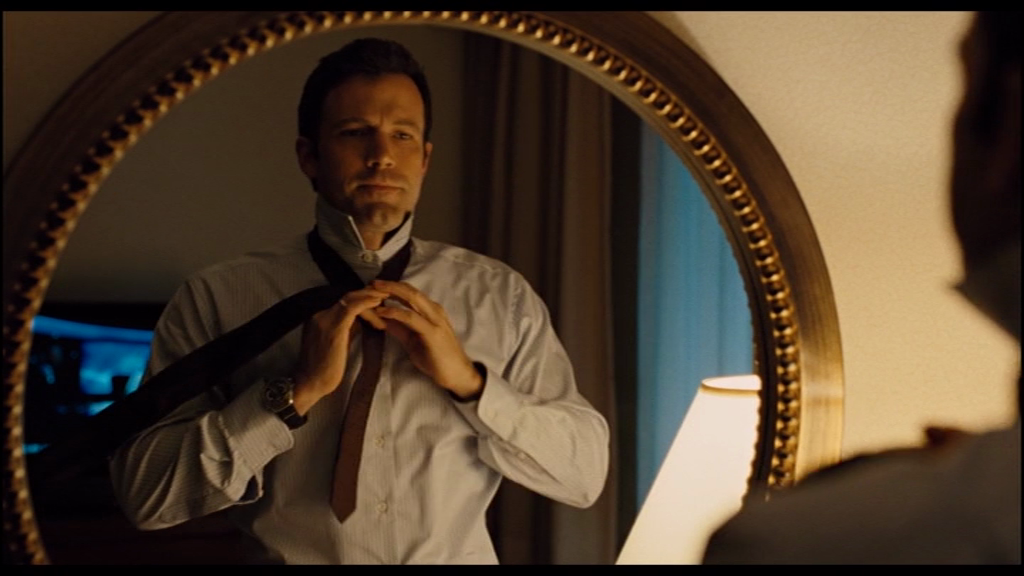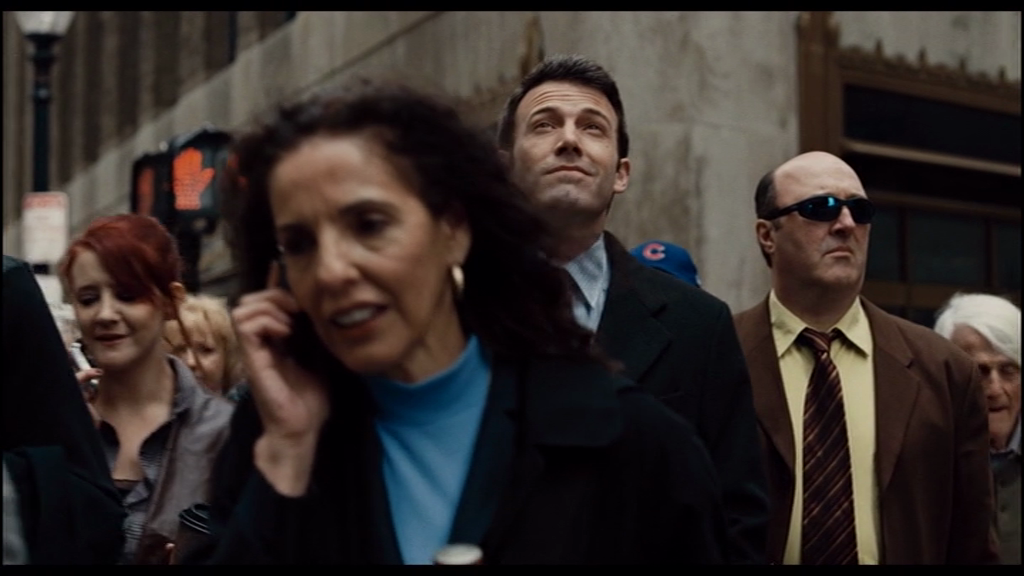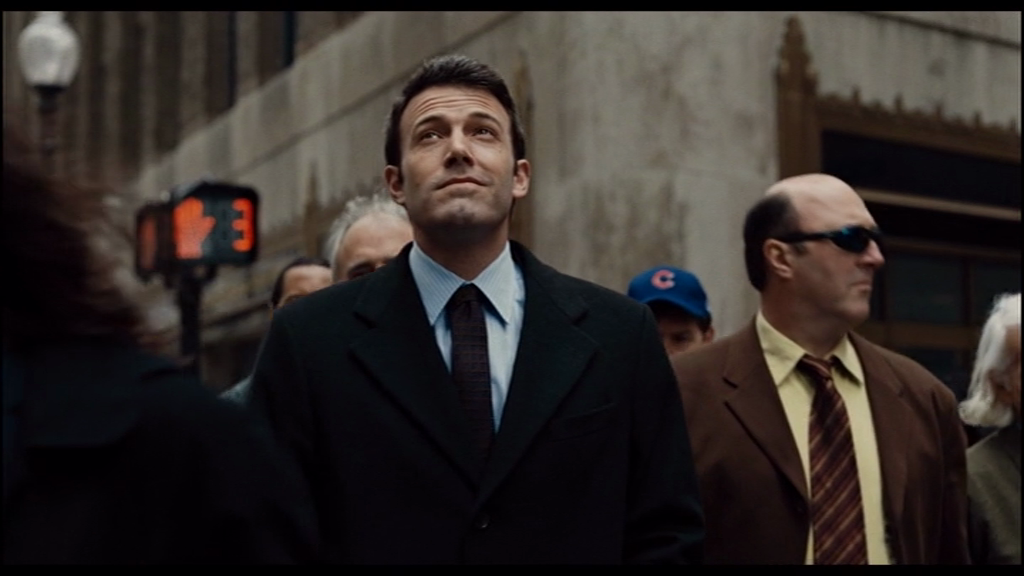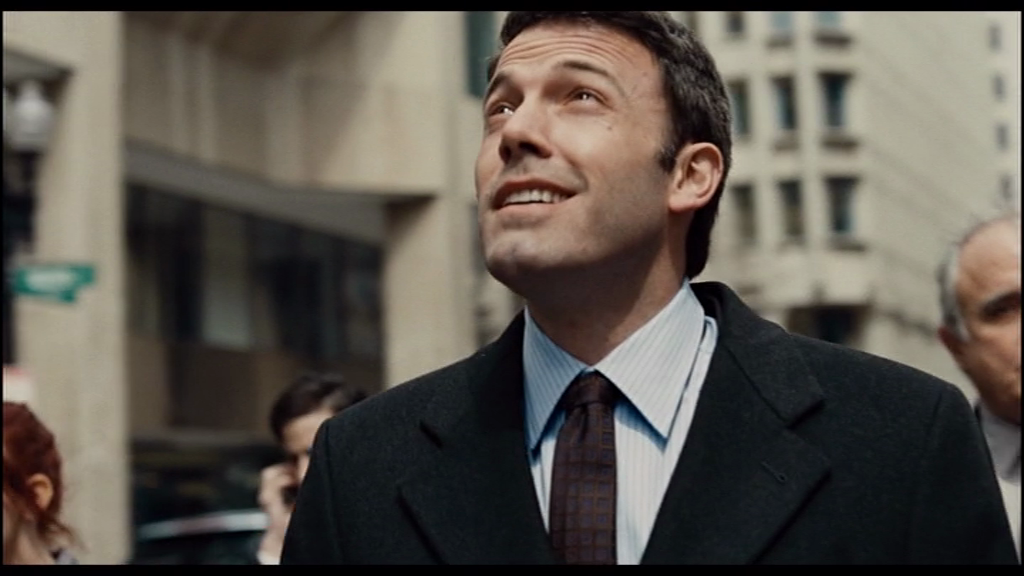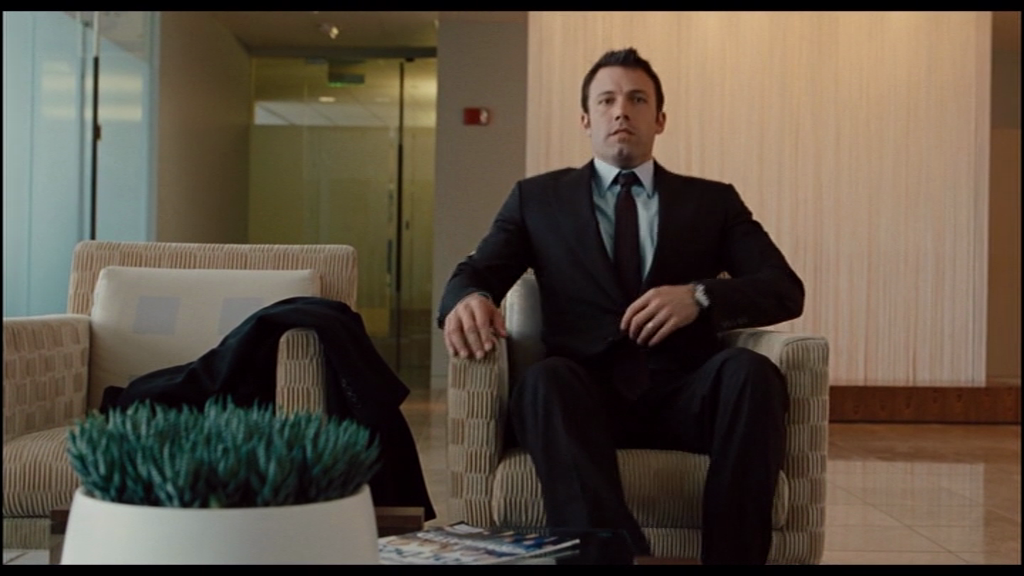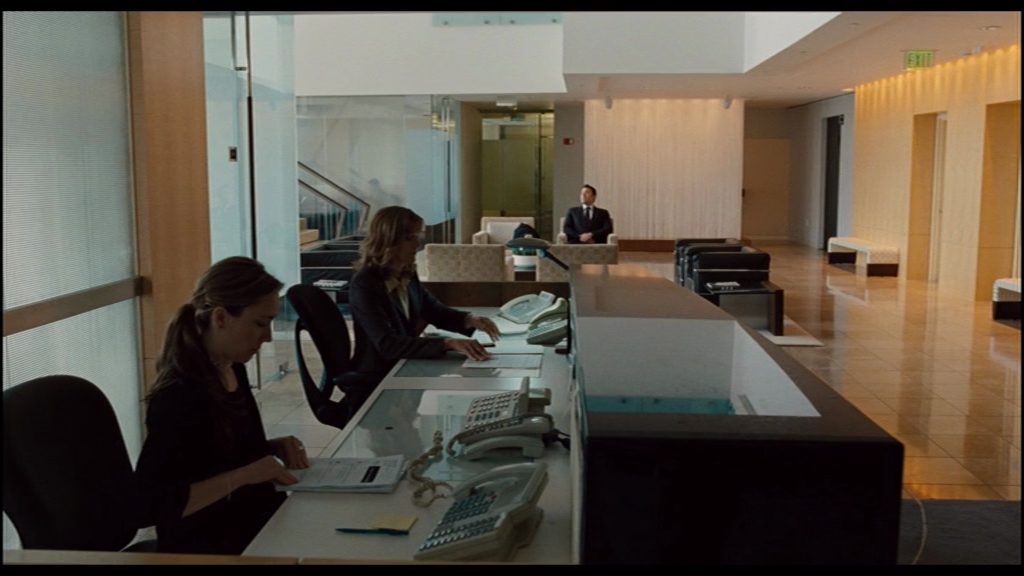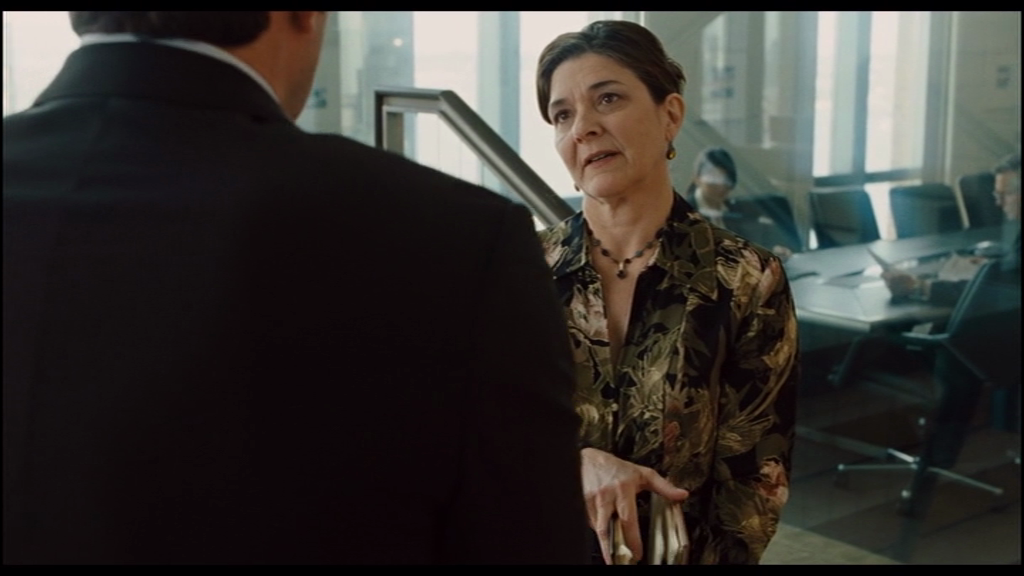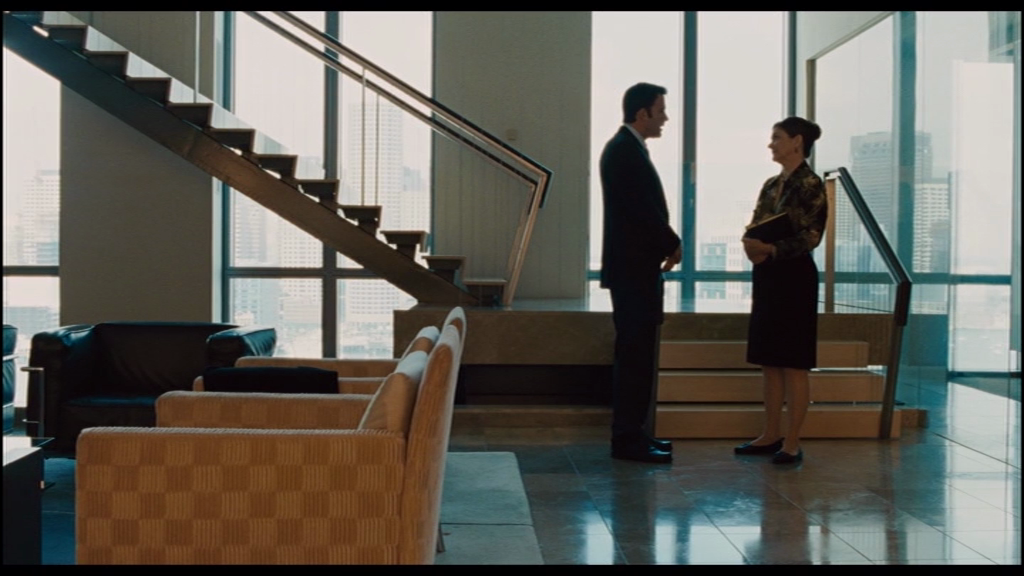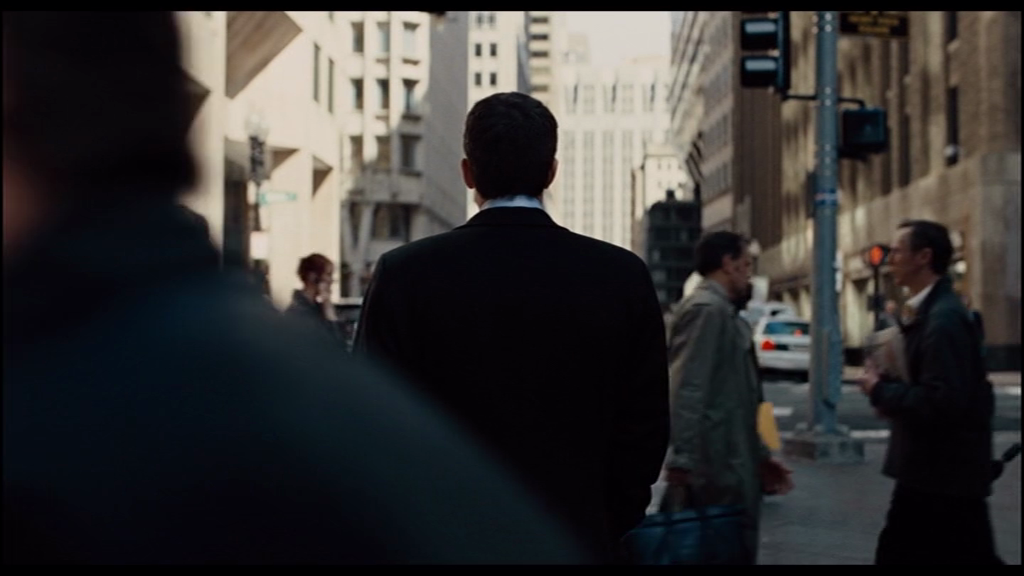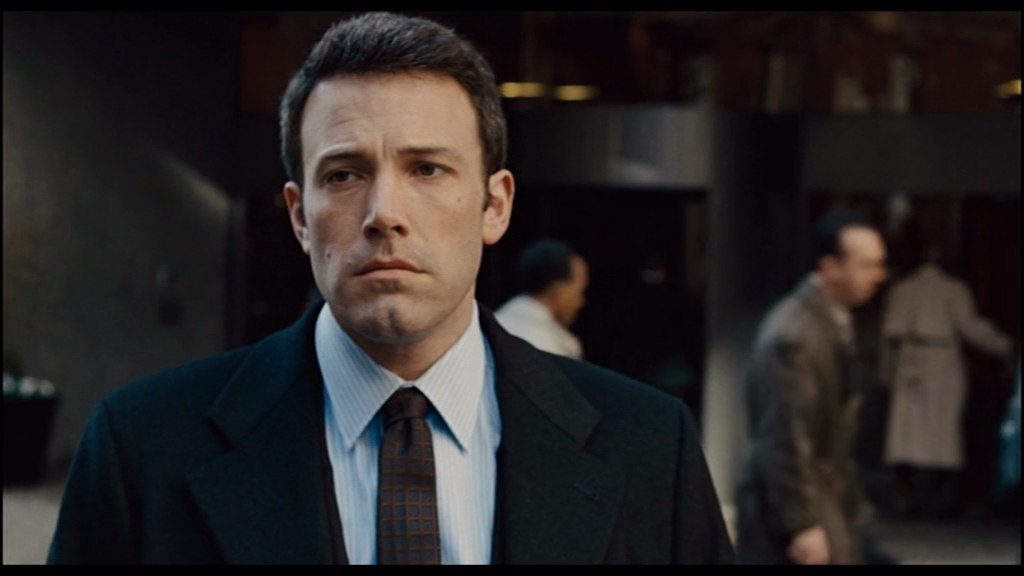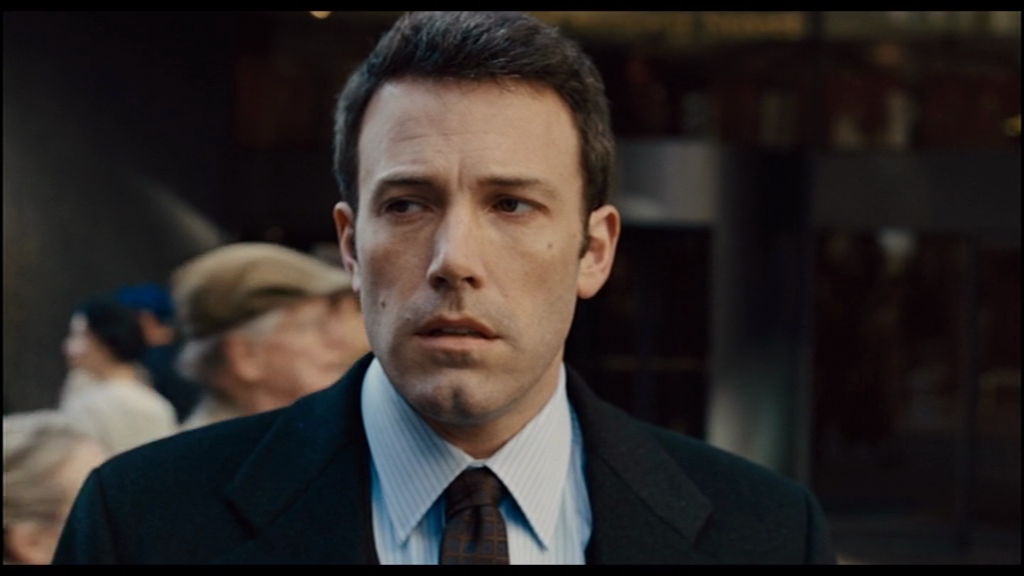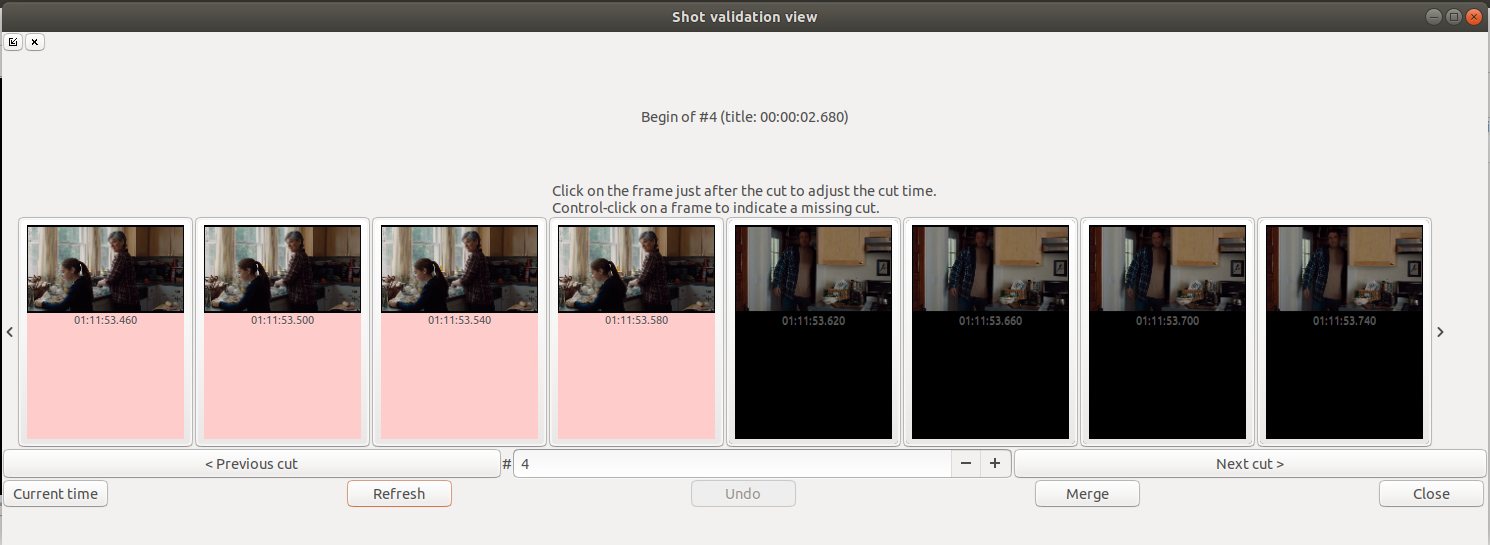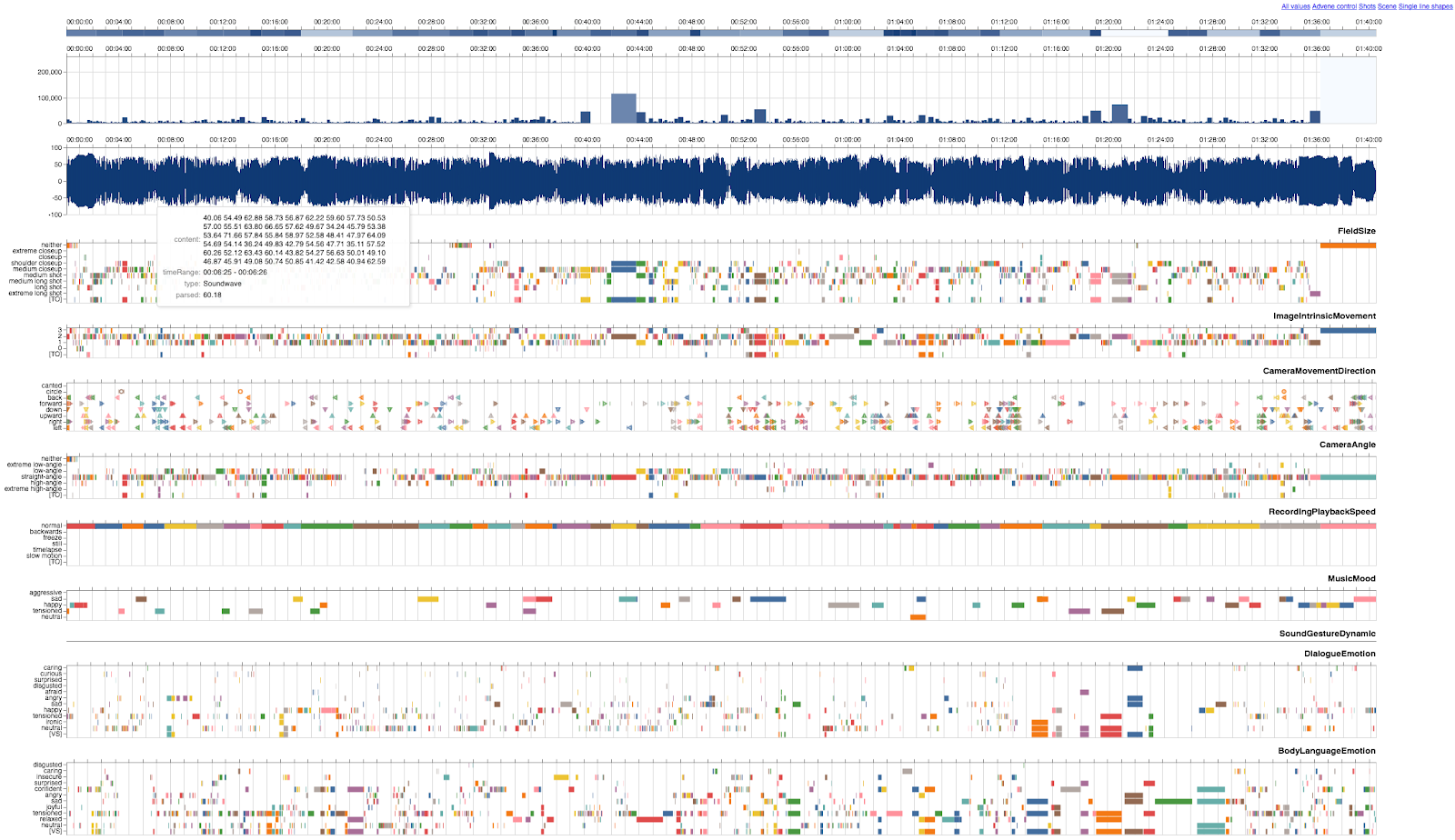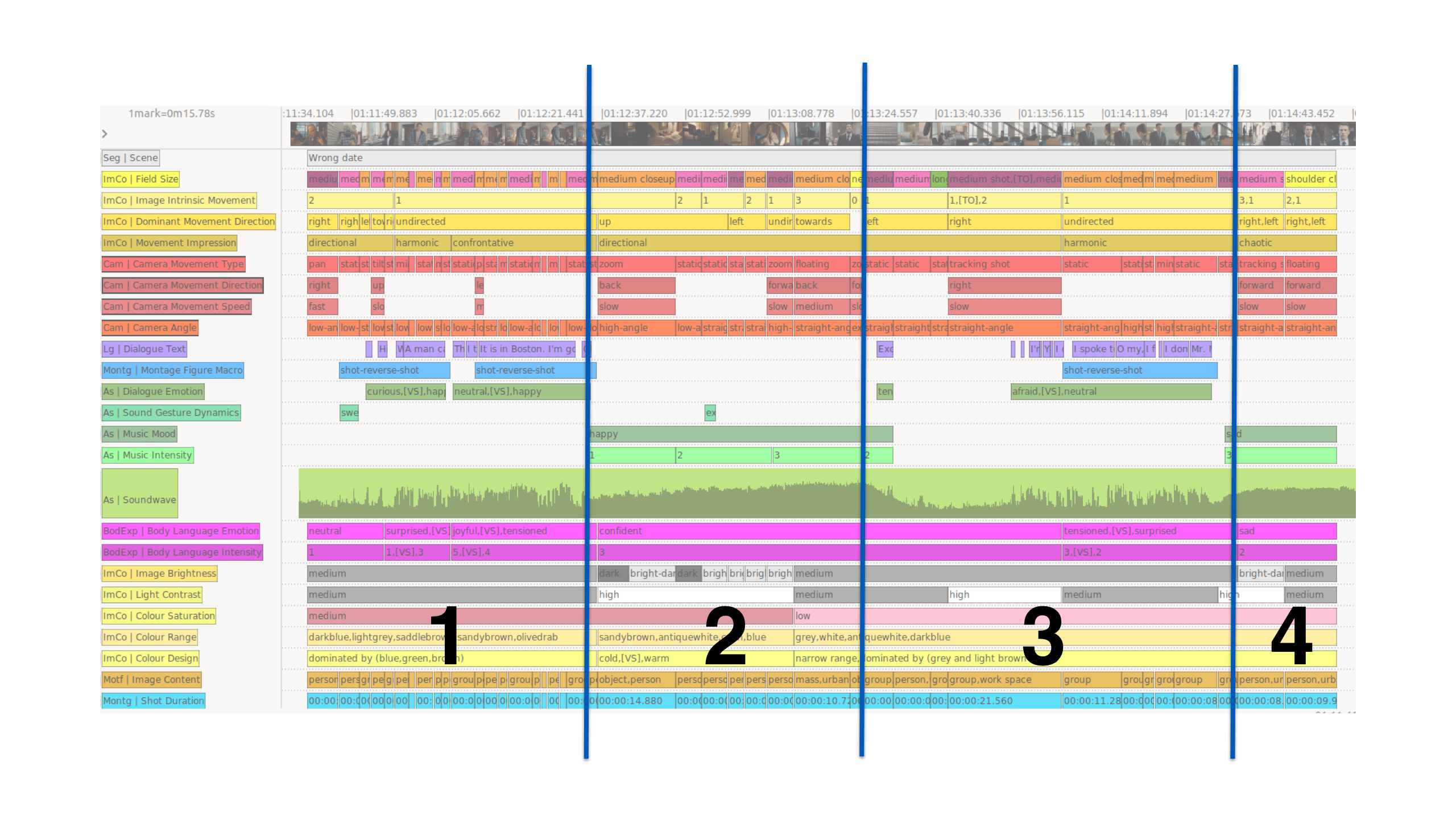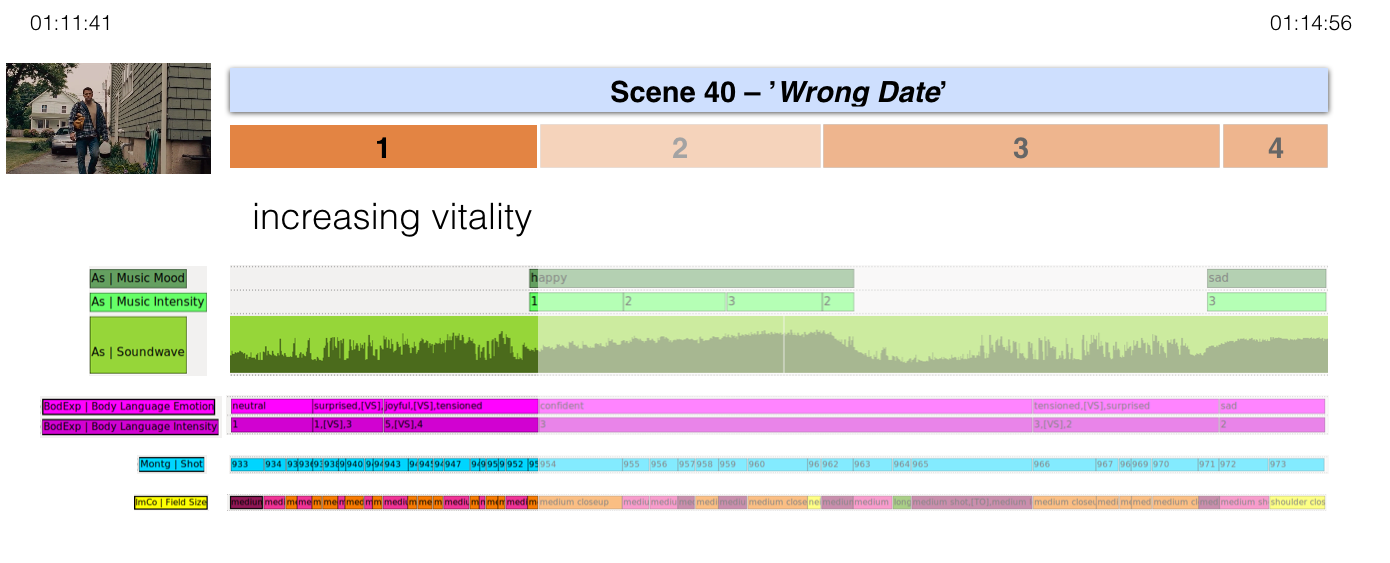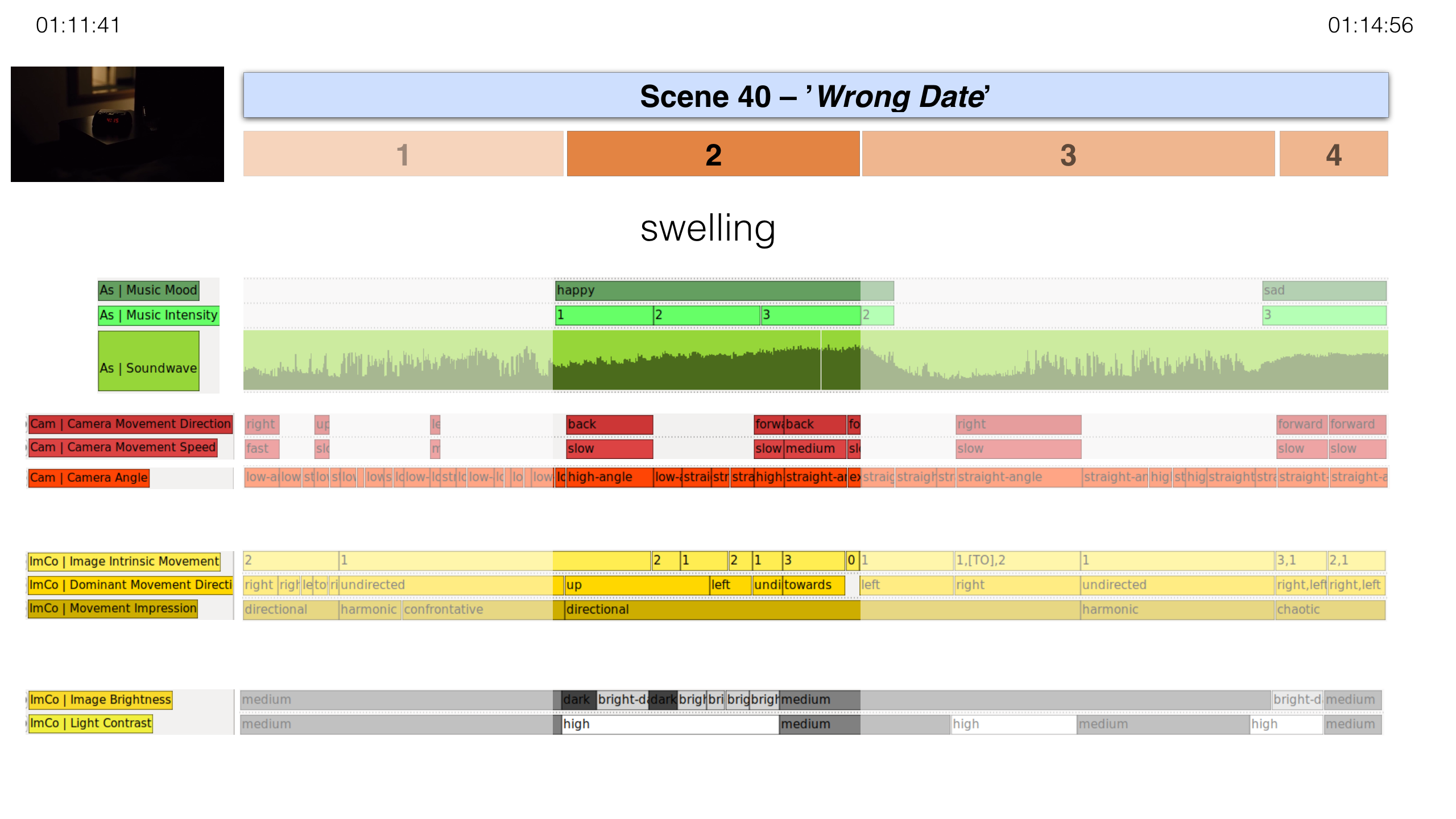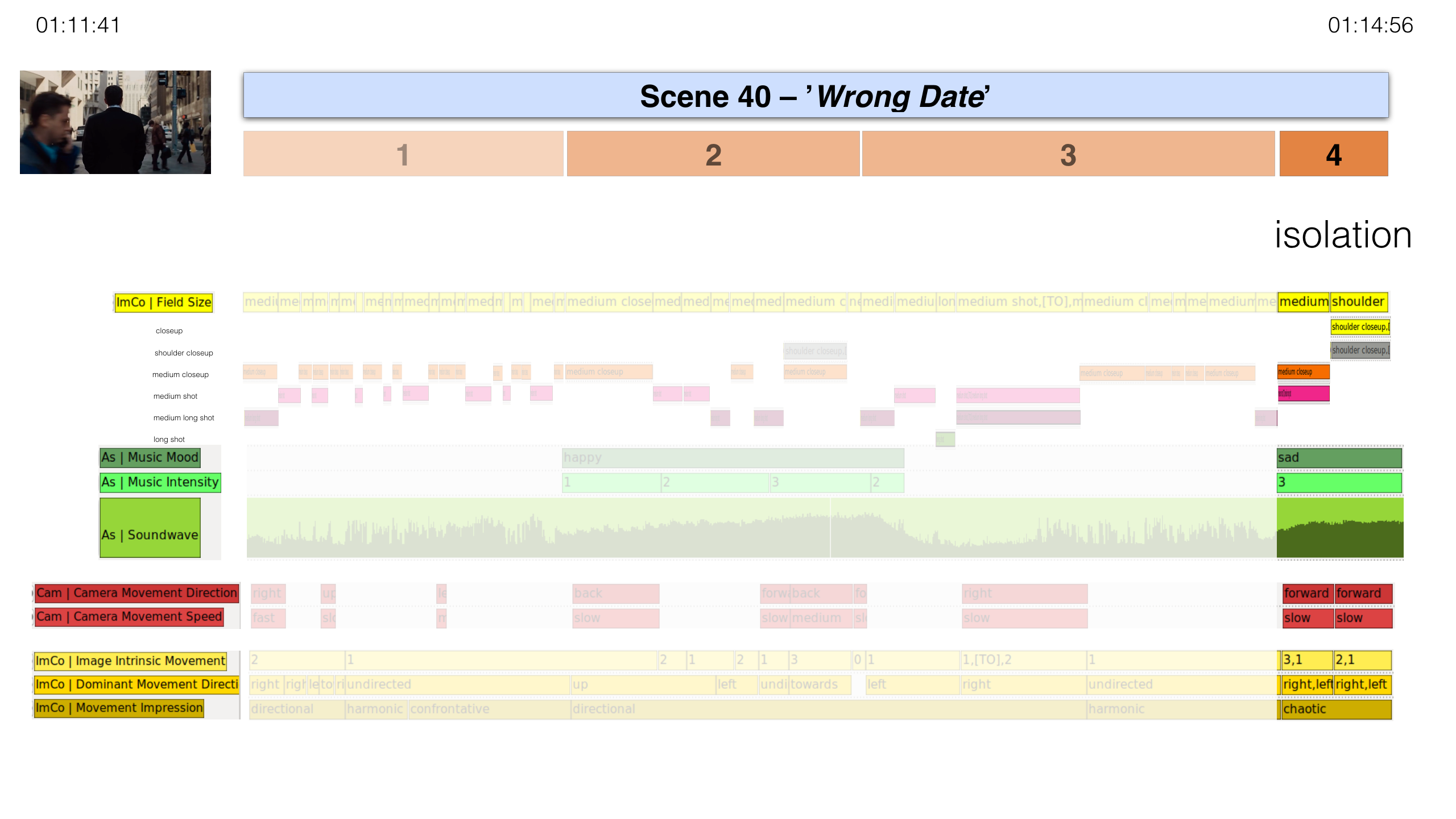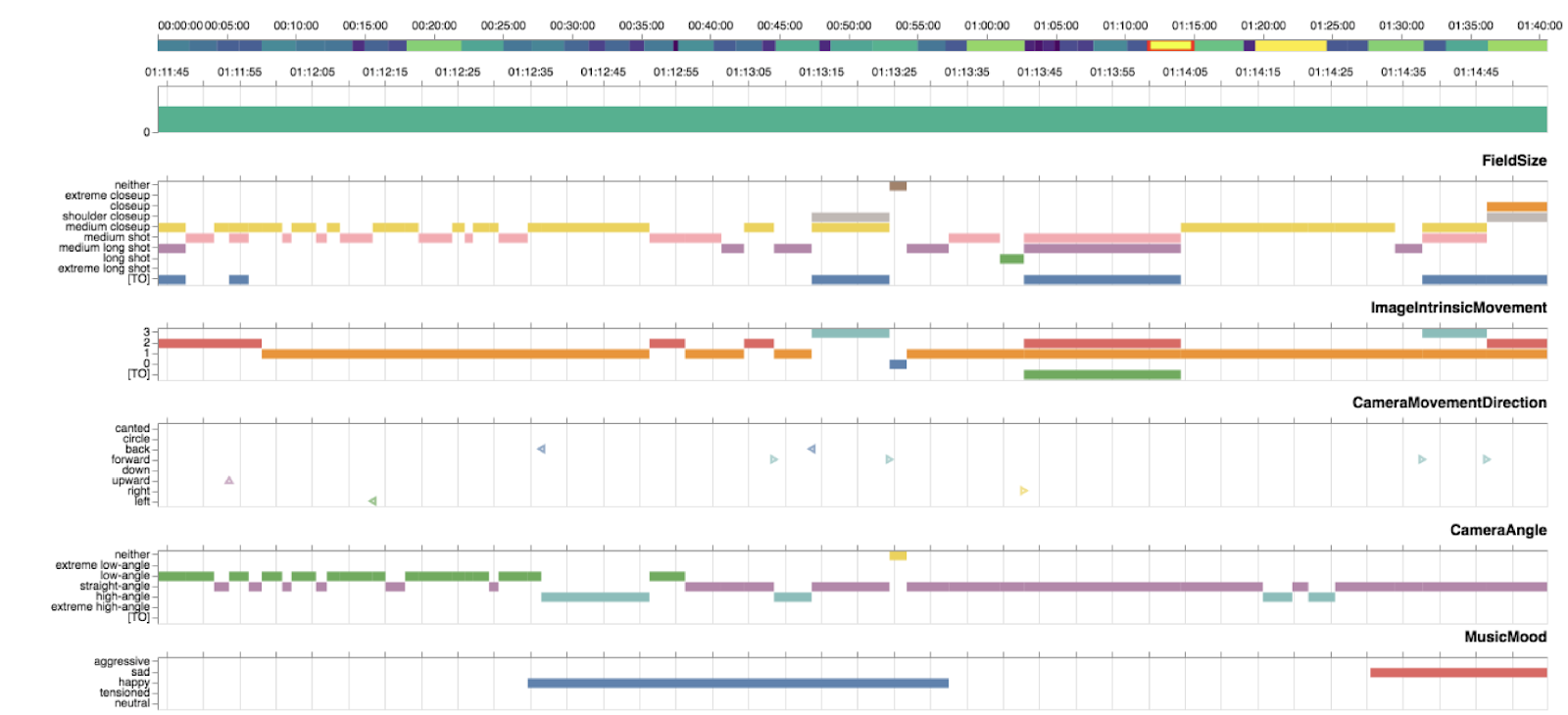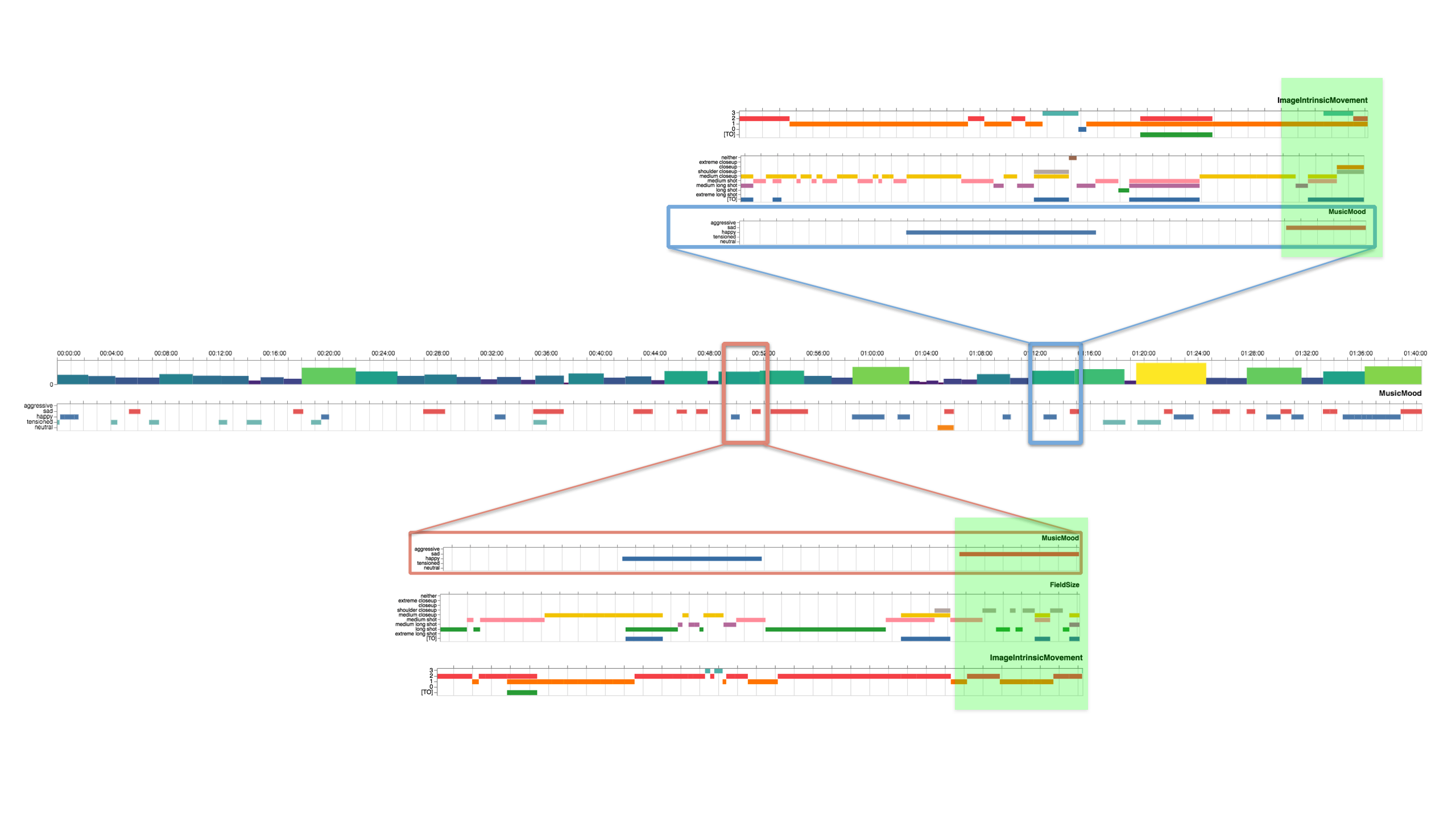Abstract
This article presents a framework that reconciles the requirements of computational methods with a qualitative, phenomenological approach to the analysis of audiovisual media. In its temporality and multimodality we treat audiovisual media as exemplary with regard to the wider field of performative arts and their analysis in digital humanities approaches.
First, we argue in favor of grounding digital methodology explicitly in scholarly, theoretical approaches to the human experience of performative arts and outline a qualitative approach to compositional patterns and dynamics of affect in audio-visual media. To demonstrate this approach, an exemplary scene analysis highlights the specifics of analyzing experiential qualities based on micro-level descriptions of compositional structures.
Eventually, the main body of the article spells out three central challenges with regard to this use of computational tools: 1.) recasting common film analytical vocabulary into a machine readable semantic ontology; 2.) setting up a systematic and applicable annotation routine that is based on the developed semantic ontology and allows for the interpersonal and consistent description of larger corpora; 3.) developing visualizations and query tools that enable the identification and tracing of compositional patterns within complex sets of annotation data.
The article concludes by demonstrating the benefits of visualized annotation data by taking up the exemplary analysis sketched out earlier and, ultimately, reflects upon the implications of the outlined AdA filmontology as a programmatic starting point to addressing intersubjective bases of experience in the wider field of digital humanities.
Research in the humanities concerned with aesthetics and performative arts draws upon a
distinct tradition of what we might call “close reading:” Oscillating between
formal description and hermeneutic interpretation, between shared myths, theories, codes
and highly subjective lines of thought, the humanities’ analytical grasp on aesthetics
and poetics is intimately tied to accounts of personal experience, rooted in the
principles of exemplary study and subjective reading.
Over the past decades, developments within the field of computational science as well as
the social and cultural shifts that are usually referred to with the broader term
‘digitalization‘ have affected core theory and methodology within the humanities. These
developments provide alternatives and additions to familiar analytical approaches and
give new weight to the kinds of statistical and numerical data collection that have been
established with analogue means [
Salt 1983]. New software-based methods
have led to a whole range of research that aims at producing machine-readable data as
well as processing this data within the logics of quantitative analysis, advanced
statistics or visualization. With regard to audio-visual material, Cinemetrics [
Tsivian 2009], the Digital Formalism project (e.g.
Gruber et al. 2009) and especially Adelheid Heftberger
[
Heftberger 2018] as well as the film color projects conceived and led
by Barbara Flückiger (e.g.
Flückiger 2017), among
others, have made groundbreaking contributions to this line of research.
At the same time, new possibilities for harvesting archives and metadata sets have
propelled advances in historical research (e.g.
Jacobs and
Fyfe 2016,
Verhoeven 2016). Large parts of
the latter development have been described and theorized convincingly under the term
“distant reading” (see
Moretti
2013). The methodology of distant reading has opened up new perspectives for
research within the humanities, namely a shift from exemplary analysis to the
comparative study of large corpora, while at the same time generating new modes of
evidentness. For example, there are numerous approaches combining quantitative
empiricism and humanities' epistemology [
Schöch and Jannidis 2013] or producing new
aesthetic modes of insight by means of big data visualization (e.g., the Cultural
Analytics research by Manovich’s Software Studies Initiative [
Manovich 2009]
[
Manovich and Douglas 2009]
[
Manovich 2016]) and other activities situated in the field of artistic
and explorative research [
Dawes 2004]
[
Ferguson 2015]
[
Ferguson 2017].
There are many possible research objectives that all share the feasibility of studying
large corpora as a key requirement: for example the analysis of a very productive
novelist’s body of work or the comparative study of all news reports on a given topic
within a certain country and time frame. In particular the compilation of large sets of
art works and media by means of social sciences and neuropsychology benefits from these
kinds of insights from the humanities, may they be quantitative or – as we will try to
demonstrate – qualitative. Therefore, the possibility of studying large corpora, which
has been considered out of reach for single scholars or small groups of researchers who
work within the framework of close and detailed hermeneutical studies, promises new
perspectives for research within the humanities as well as interdisciplinary
research.
But while opening up these perspectives, the methodology of distant reading – especially
the turn to quantitative methods and often highly abstracting visualizations – has also
created a major challenge with regard to advancing on this path in the field of art and
media studies. These epistemological principles aim at expanding humanities' focus to
larger corpora by an emphasis on the “distant” purposely transforming or even
discarding the “reading.” It thus literally distances respective research in the
field of the digital humanities from what we assume to be at the core of art and media
consumption in the first place: the human experience of a given work of art or media. In
this sense, “Distant reading is almost not reading at all”
[
Burdick et al. 2016, 39].
[1] This
mostly concerns studies of extensive corpora that by and large still focus on a
combination of quantitative approaches and the epistemology of distant reading [
Moretti 2013]. As a result, the methodology of distant reading has generated whole new sets of
research questions and perspectives with regard to the macro structures and long term
developments of certain media, formats and genres – but the underlying principles of
abstraction
[2], accumulation and statistics fall short when it comes to questions of
performativity, dynamics of perception, or aesthetic experience.
This circumstance becomes apparent in the field of performative, time-based arts like
music, theatre, dance or film – especially if the respective research is shaped by a
theoretical framework that draws on phenomenological approaches to aesthetics and
poetics. In these cases, statistical data based on discrete entities is often of limited
value. It is well possible to count how many A-minor chords are featured in a given
piece of music, how often a dancer performs a certain move, or which percentage of long
shots are followed by a close-up in a film. But from a certain perspective within the
study of performative arts, this information is epistemologically incomplete. With
regard to aesthetic experience, it is only the specific tangible context – the harmonics
and dynamics of that specific piece of music, the kinaesthetics of bodily expression in
that certain dance routine or the interplay of music, cutting rhythm and acting within
that particular film scene – which makes these features meaningful. The very advantage
of distant reading – stepping out of the tangible context of a certain point in time or
space within a given work of art in order to get a grasp on overarching principles of
the work as a whole (or even larger corpora) – shows its limits. Whereas a research
object that is being referred to in terms of a semiotic, semantic, or syntactic paradigm
can be divided into discrete entities with a fixed ‘value‘ or ‘meaning‘, the
experiential quality of a certain detail within a phenomenological approach to
aesthetics and performativity largely depends on the aesthetic composition as a whole.
Accordingly, these research objects pose a challenge to the ways the isolation of
features, the encoding of media texts and the accumulation of data are currently being
conducted within parts of the methodologies of digital humanities.
Against this backdrop, this paper addresses a simple question: Is it possible to use
tools and methods developed within the fields of computational science and digital
humanities in order to carry out qualitative analysis of aesthetic compositions? How can
we productively study aesthetic experience while drawing upon the informational paradigm
[
Coppi 2002], i.e. the data driven operations of computational
analysis?
In the following, we will present the methodological developments of the
interdisciplinary project “Audio-visual rhetorics of affect”
[3] (a
cooperation of film studies and computational science; from here on referred to by its
short title “AdA-project”) as an exemplary approach to the
computational analysis of performative arts and media. Drawing on a qualitative approach
to dynamics of affect in audio-visual media [
Schmitt et al. 2014]
[
Scherer et al. 2014]
[
Kappelhoff and Bakels 2011] that combines a phenomenological understanding of film
with the structural analysis of compositional patterns, this project aims at identifying
rhetorical tropes within feature films, documentaries and TV reports on the global
financial crisis (2007 and following). Addressing the questions posed above, this paper
will focus less on specific findings (i.e. certain rhetorical tropes or a set thereof)
but rather on the analytical framework that has been established in order to study a
large corpus of audio-visual material with regard to aesthetic experience. This
framework draws upon tools from the computational sciences, i.e. (semi-)automatic video
analysis, semantic data structuring and machine learning.
[4]
On the one hand, the AdA-project has to grasp its subject matter on the micro-level of
audiovisual composition – due to the focus on audio-visual rhetorics and the dynamics of
affect shaped by moving images. On the other hand, this micro-level has to become
graspable within an epistemological framework similar to the approach of distant reading
in order to identify recurring compositional patterns.
This path poses two obstacles: a) the micro-level description of compositional
structures has to be carried out across a corpus of films and TV reports that is well
beyond the scope of what film scholars are able to analyze by themselves within the
timeline of a research project; b) an approach including the scalable analysis of
aesthetics and expressivity has to generate paths towards modes of abstraction that are
fundamentally different to what semiotic and statistical paradigms of distant reading
currently have to offer, as well as to humanities analysis approaches based solely on
natural language. Against this backdrop, this paper intends to treat the AdA-project’s
methodology as an example for studying performative arts and media by means of
computational analysis. By discussing the specific challenges the project has to
address, the paper seeks to sketch out ways towards modes of analytical abstraction and
data processing that remain close to the way artworks and media are experienced by human
beings. It thus contributes to the more recent trend to integrate the close, the distant
and the in-between under the terms of “scalable reading” or
“scalable viewing”
[
Mueller 2012]
[
Pause and Walkowski 2019]
[
Fickers et al. 2018].
In order to exemplify the path the project has taken so far with regard to the
aforementioned obstacles, this paper will present a method from the field of film
studies that – aiming at the affective experience of audio-visual sequences – qualifies
their affective dimension by means of qualitative description and conceptually grasps
the nexus of aesthetic experience of viewers and rhythmic-kinetic figurations of
audiovisual images (see Sections 1.2 and 1.3). We will then proceed to address a number
of challenges we encountered on our way of remodeling this method within a computational
framework; this includes a detailed video-annotation routine, semantic data structures,
the integration of tools that enable semi-automatic video analysis as well as
computer-generated visualizations of compositional patterns. Therefore, the main focus
of this article is on the recasting of the common knowledge of basic film analytical
concepts into a consistent, machine-readable data model which provides the basis to
address many challenges of digital film analytical methods (see Sections 2.1, 2.2 and
2.3). Finally, we will present how the analysis of the same example mentioned above
unfolds if it is performed within the methodological framework of our computer-based
approach (see Section 2.4) – and reflect upon the perspectives this kind of research
offers with regard to matching computational analysis and human experience in the field
of art and media studies (see Section 3).
1. A systematic approach to human experience: The eMAEX-Method and affective
dynamics in film-viewing
Before we discuss this paper’s main question – how to analyze arts and media on the
level of human experience within a digital humanities framework – it is important to
address a crucial question on the level of film theory first: Is it after all
possible to address aesthetic experience on a general level, regardless of individual
dispositions and differences and without postulating universal mechanisms of
perceiving and processing? This question concerns any kind of research dealing with
human experience of temporal arts and media, not turning to methods of
self-disclosure or physiological measurements of actual empirical subjects (e.g. as
applied within the social sciences and empirical psychology). In order to address it
– in an exemplary way –, we are going to briefly sketch out a qualitative method
developed within the field of film studies that aims at qualifying the affective
experience of audio-visual segments based on film-analytical methods (see
Kappelhoff and Bakels 2011,
Kappelhoff 2018a,
Scherer et al. 2014).
1.1 Aesthetic experience and intersubjectivity in film viewing – theoretical
bases
As the programmatic remarks have indicated so far, we are strongly advocating for
an approach to digital humanities that accentuates the theory driven and theory
building aspect of humanities’ research. The following chapter serves as a brief
sketch of the film theoretical background that informs both our research questions
and the direction of method and tool development in the collaboration with our
colleagues from the computational sciences. Even though we hope that key elements
of the approach – specifically the systematic annotation vocabulary and the data
visualization – are employable by different theoretical schools, they have been
developed in view of a framework that focuses on the premises of embodied
perception and the expressivity of movement patterns.
From a film studies perspective, all methodological questions concerning film
analysis in the context of digital humanities are preceded by the challenge to
engage descriptively with a fleeting subject matter that solely exists within the
time of its perception [
Bellour 1975]
[
Bellour 2000], and more pinpointed to our theoretical perspective:
its being-viewed by an embodied spectator. Some branches of film theory tend to
avoid this problem by tying the spectator’s emotions in film viewing to the
cognitive apprehension of character and plot constellations [
Tan 1996]
[
Grodal 1997]
[
Grodal 2009], largely leaving aside the media specific conditions
of moving images and sound. While these theories have attracted a certain
attention in the wake of a broader turn towards cognitive theory and
neuropsychology over the past two decades, they remain in opposition to a
theoretical strand that has been prominent within film studies since Hugo
Münsterberg’s early psychological accounts on the “photoplay”
[
Münsterberg 2002]. This line of research focuses on the dynamics of
movement and rhythm as the central phenomena with regard to the aesthetic
experience of moving images, especially with regard to questions of mood, feeling,
affect or emotion. Within the early years of the 20th century, the concept of
expressive movement began to serve as a crucial node at the
intersection of art theory [
Fiedler 1991], social philosophy [
Simmel 1959]
[
Simmel 1993] and anthropology [
Wundt 1880]
[
Wundt 1896]
[
Bühler 1933]
[
Plessner 1982]. While these theories referred to the concept mainly
with regard to the human body’s expressivity and its role in art and culture,
Münsterberg and his successors in film theory – like Béla Balázs [
Balázs 2010] or Sergej Eisenstein [
Eisenstein 1991] –
applied it to the kinetic and rhythmic patterns of the cinematic image.
In this tradition of thought, theories on movement and its expressive qualities
have gained new attention following the
bodily turn respectively
performative turn within the humanities and social sciences that
took place in the 1990s. In film theory, neo-phenomenological theories on
embodiment and embodied perception once again turned the focus on
movement and its crucial role at the intersection of expressivity and embodied
perception (see
Marks 2000,
Barker 2009,
Meunier
2019). Following Vivian Sobchack [
Sobchack 1992], one of
the most prominent voices within neo-phenomenological film theory, it is exactly
this expressive quality of movement that provides the basis for an intersubjective
understanding of experience in film viewing. According to Sobchack, the cinematic
image presents itself as a situated seeing and hearing, a subjective perspective.
In the act of film viewing, the spectator experiences the kinetic and haptic
qualities of this situated viewing and hearing as an embodied being. The
spectator’s perception and the cinematic image – as an expression of perception,
of seeing and hearing – are intertwined in a two-fold act of perception grounded
in the principle of an embodied being’s kinetic being-in-the-world:
In a search for rules and principles governing cinematic
expression, most of the descriptions and reflections of classical and
contemporary film theory have not fully addressed the cinema as life
expressing life, as experience expressing experience. Nor have they explored
the mutual possession of this experience of perception and its expression by
filmmaker, film, and spectator – all viewers viewing, engaged as
participants in dynamically and directionally reversible acts that
reflexively and reflectively constitute the perception of expression and the
expression of perception. Indeed, it is this mutual capacity for and
possession of experience through common structures of embodied existence,
through similar modes of being-in-the-world, that provide the
intersubjective basis of objective cinematic communication.
[Sobchack 1992, 5]
Sobchack’s notion of the
intersubjectivity of kinetic and haptic dynamics of film resonates with thoughts
on the commonalities of film and music Sergej Eisenstein has developed in the
1940s, suggesting specific compositional principles with regard to the arrangement
of movement and rhythm while outlining his ideas of expressive movement and a
cinematic aesthetics of effect [
Eisenstein 1988]. Lately, these
ideas on cinema’s audio-visual musicality have again been picked up on in theories
on audience engagement [
Pearlman 2009] as well as with regard to
dynamic affects in film-viewing [
Kappelhoff 2004]
[
Kappelhoff 2018b]
[
Bakels 2017].
This conception of the audio-visual modulation of affects grounded in the temporal
shaping of intensities and rhythms has also been argued for by appealing to the
work of the developmental psychologist Daniel Stern [
Stern 1985]
[
Stern 2010]. His theory of the vitality affects or vitality forms
was introduced to the film theoretical discourse by Raymond Bellour [
Bellour 2011]. Affects here are applied as self-contained temporal
gestalts of movement, of rhythm, and of intensity, which are not linked to
individual modalities of perception or forms of interaction. It is a matter of
synaesthetic patterns, such as the creeping, the bulging, the explosion-like, or
the fading, which can each occur as specific experiences, both in perception and
in action as well as in feeling and thinking. These are derived from primordial
forms of intersubjective, cross-modal interaction, like the affective reflection
of an infant’s facial expression in the voice of its mother. Cinema, according to
Bellour, can also be thought of as a similar interaction, constantly translating
perceptions into feelings, for it produces:
in the
variety of its components (the image and the modalities of the soundtrack
incorporated in it) [...] the constant illusion of a sensory attunement
between the elements of the world, just as it does between the bodies that
are deployed in it.
[Bellour 2011, 229]
Taken together, neo-phenomenological film theory’s core assumption of the
audio-visual image being intersubjectively experienced as a two-fold act of
kinaesthetic perception on the one hand, and theories on expressive movement,
rhythm and audio-visual composition on the other, offer a way to address the
aesthetic experience of moving images from an analytical perspective. Theories on
movement and rhythm in audio-visual images serve as a methodological starting
point for reconstructing dynamics of swelling tensions, shifting kinetic forces
and the temporal shapes that emerge within these dynamics – by means of
systematically describing patterns of audio-visual composition and their
experiential qualities. In turn, neo-phenomenological theories on the embodied
perception of movement provide the theoretical basis for assuming these
experiential qualities to be experienced regardless of individual dispositions and
differences, i.e. addressing human experience on a more general level without
claiming universality.
With regard to the question raised at the beginning of this section – whether it
is at all possible to address aesthetic experiences in film viewing on a general
level via means of film analysis – we can now give a more nuanced answer: Of
course, we do not claim to be able to predict a specific human being’s experience
of a certain audio-visual sequence in detail and in total by means of film
analysis. Obviously, we would never deny the notion of experience being rooted in
specific cultural and historical contexts, as well as the conception that matters
of feeling and understanding are highly subjective. Against the theoretical
background we have sketched out here [
Kappelhoff 2018b]
[
Müller and Kappelhoff 2018], we should be able to demonstrate to what extent
embodied experiences of audio-visual sequences can be reconstructed – by referring
analytically to the spatial and temporal dynamics of specific rhythmic-kinetic
figurations of audio-visual composition. Or to put it differently: We all do make
our own experience in watching a certain film, TV series or news report. But given
the basic principles of rhythm, movement and embodied perception, these individual
experiences should relate to commonly shared experiential dynamics that are
reflected in one way or another within our individual accounts. The aim of the
method outlined within the rest of this article is to grasp this commonly shared
basis of film experience and to make it accessible for comparative research. But
before we get to the question of how this goal is achieved via digital tools, we
first like to present a methodology that was developed with regard to this
theoretical framework and exemplify it with a short analysis.
1.2 eMAEX: qualifying the affective dynamics of audio-visual sequences by means
of segmentation and description
The eMAEX
[5] system aims at providing a methodological framework for analyzing and
qualifying the expressive and affective qualities of audio-visual material – may
it be a contemporary Hollywood feature film, arthouse cinema, a screwball comedy,
a war documentary or a web video.
[6] At the time of its initial development, it
consisted of a systematic routine to segment, describe and qualify units of
audio-visual composition as well as a web-based multimedia environment that
enables researchers to combine analytical descriptions, film stills, data
visualizations and the subject matter of analysis (i.e. video files of
audio-visual source material) in order to display the results of film analytical
studies. The computational approach to film analysis presented in Section 2 of
this article is based on the analytical routine of the eMAEX framework and can be
viewed as an advancement and adaptation of its routine in regard to the
requirements of a semantically structured and machine-readable analytical
vocabulary. Over the course of the following two subchapters of this section, we
will exemplify the original eMAEX approach in order to a) unfold a vivid example
of what we mean when referring to the aesthetic experience of moving images from a
film studies perspective and b) thereby provide the necessary background for
addressing this paper’s central question: how a systematised and machine-readable
analytical vocabulary in combination with digital tools for video annotation can
help to expand such a perspective on embodied aesthetic experience with regard to
the comparative analysis of large corpora.
Following the theoretical concepts of
expressive movement and
embodiment outlined above, eMAEX aims at the systematical
description of spatio-temporal dynamics in moving images. Segmenting the subject
matter at hand serves as the first step within the analytical routine and provides
the basic temporal structure of the given subject matter. Following the intuitive
elementary category of temporal segmentation within the everyday, journalistic and
academic discourse, the object of study is first segmented into single scenes –
conceptualized as an experiential unit.
[7] Within the routine’s
vocabulary, this basic structure, the succession and affective interplay of
scenes, is referred to as the object of research’s temporal macro level.
While the segmentation into scenes is a methodological consensus in various film
analytical approaches and often carried out intuitively, the second level of
segmentation is intimately tied to the qualitative description of the analyzed
material: Within the first step of analysis, an initial short description of the
scene is produced; by focusing on five formal levels of audio-visual composition
(namely choreography, camera, sound, gestures and facial expressions and image
composition) rather than on narration and representation, this initial description
provides a first insight into the compositional principles that shape the
respective scene. The grouping of the many different aspects of audio-visual
composition into these five levels was based on a pragmatic reasoning that
balanced the need for some kind of standardization within projects with the
limited possibilities of free text annotation. The elaboration of this
standardization of description routines into a workable data modelling has been
one of the main foci of our subsequent developments.
Based on this initial description, the scene as a whole is sub-segmented into
consecutive expressive movement units (EMUs), i.e. the interplay of
different levels of staging is described as one temporal gestalt,
loosely comparable to a gesture of the film itself. Two of the five formal levels
of composition mentioned above are chosen as dominant levels within each EMU.
Usually changes with regard to dominant levels of composition provide strong hints
with regard to the scene’s segmentation into EMUs. Following this second step of
segmentation, a qualitative description of the compositional dynamics shaping each
EMU is produced separately, and the respective EMU is qualified with regard to its
affective dynamics.
In a final, third step, the dynamic interplay of a scene’s EMUs forming the
compositional logic of the respective scene as a whole is also subject to a
qualitative description of its affective dynamics. Following this last step,
qualitative data on the respective subject matter of analysis has been gathered on
three levels:
- All scene’s sub-segments of audio-visual composition (EMUs) are qualified
with regard to their affective dynamics as cross-modal temporal gestalts.
This in-depth analysis constitutes the micro-level of analysis.
- The interplay of these sub-segments within each scene is also qualified
with regard to its affective dynamics; this is referred to as the meso-level
of analysis.
- The qualifications with regard to each scene’s affective dynamics are
displayed as an affective course spanning the whole film; this course is
referred to as the macro-level of analysis, revealing each research object’s
basic dramaturgy of affect.
The final subchapter of this section will unfold an exemplary scene
analysis according to the eMAEX system in order to provide an example of how we
conceive the aesthetic experience of audio-visual images – before the next section
will address the question of how such a qualitative approach can be followed up
upon via digital tools of video analysis.
1.3 Exemplary Analysis: A scene from The Company
Men
In the following, we want to present the exemplary analysis of a scene from the
AdA-project’s corpus that is supposed to serve as a tangible example for the
concept of cinematic expressive movement. The film
The
Company Men (John Wells, USA 2010) addresses the consequences of the
financial crisis after 2007 in everyday life. More precisely, the film focuses on
job cuts due to speculations on the stock market – by following several male
protagonists and their struggle to find a new job in order to provide for their
families.
[8]
To give you a short overview of the exemplary scene, taken from the second half of
the film: Bobby Walker – played by Ben Affleck –, who has been fired from his
office job at a logistics company in Boston and lives with his family at his
parent’s house, is searching urgently for a job as marketeer. After getting a
phone call with the invitation to a job interview and a short discussion with his
wife, we see him preparing in a dark hotel room for the job interview with a
company in Chicago: the protagonist awakes at dawn, carries out his fitness
routine and irons his shirt. We then see him walking amid a crowd of people in
business outfits towards a high corporate building. Inside the building, in a
shiny lobby, Bobby walks towards the reception counter. After announcing himself
he sits down and waits nervously. When the assistant of the awaited manager
appears, Bobby learns that the appointment has been mixed up and that there won’t
be a job interview. The scene ends with Bobby standing disappointed in a busy
crowd of passersby on the streets of Chicago.
In this plot summary – like in every film synopsis – the varying experiential
qualities and dynamics of the scene have already been synthesized into
attributions like “shiny,”
“nervously,”
“disappointed” and so on. The following analysis is aimed at grasping the
expressive qualities in which those summaries – i.e. verbal accounts of experience
– are rooted. In order to make substantiated claims about the scene’s experiential
quality, we will now break down the scene’s compositional structure into EMUs,
drawing on the second level of temporal segmentation of the eMAEX framework as
outlined above. In doing so, we will briefly describe each EMU and its affective
quality with regard to the temporal gestalt that is constituted through the
interplay of its dominant formal levels – in this case acoustics (especially
music), image composition and camera.
First Expressive Movement Unit (TC: 01:11:41–01:12:36)
In the first EMU, a figuration of a sudden increase of vividness is created
through the interplay of acting and acoustics, more specifically through harsh
contrasts in the acting style – especially the bodily and facial expressivity
of the main character played by Ben Affleck. At the beginning of the EMU, the
fatigued protagonist walks up a driveway and enters his parents' home’s kitchen.
Laconic and with low body tension, he interacts with his family. When he’s told
that there was a call in his absence from a firm in Chicago offering him a job,
the film immediately cuts to the protagonist packing his suitcase while
discussing the job offer with his wife. His body tension rises and his gestures
become more and more energetic and extensive as he talks animatedly to his
wife. The intensity of the protagonist's movements are highlighted by the
restraint of his counterpart: His wife leans on the side of the image, half in
the dark with arms crossed and a smile, she only interrupts him with brief
questions or affirming comments. The increasing vitality in acting ground the
experience of an abruptly emerging and then continually rising energy.
Second Expressive Movement Unit (TC: 01:12:36–01:13:26)
In a nonverbal sequence, we see Bobby preparing for the interview in his hotel
room and walking through Chicago until he arrives at the company building. This
process is staged as a swelling movement figuration: The music becomes louder
and more upbeat and the image increasingly brightens. In the last part, the
camera movements, Bobby’s movement as well as those of passersby form a
concerted choreography – an opening movement i.e. a cinematic gesture of
widening. This choreography emphasizes the vertical axis and underlines the
directedness of the whole sequence – from the hotel room to the busy streets of
Chicago finally tilting up the tall corporate building. The interplay of music,
movement and image composition form a swelling movement figuration that grounds
an experience of vivid directedness.
Third Expressive Movement Unit (TC: 01:13:26–01:14:37)
Through a repeated change between deep and flat image compositions as well as
close and more distanced camera positions, Bobby’s arrival in the waiting area
of the company building is staged as an emerging tension which is supported
through the hasty movements of Bobby fidgeting with a magazine. An assistant
enters the image through a flight of stairs in the rear of the image and tells
Bobby that his appointment will not take place. The lobby that the protagonist
enters is staged as a space of suppressed vividness. This is achieved through
the contrast of subtle, but constant movement of the isolated protagonists on
the one hand and an image space dominated by geometric, rectangular shapes and
clear lines and surfaces on the other. The camera approaches the conversation
before cutting out abruptly to a medium long shot while the actors nearly
freeze completely in their body movements and the dialogue stops. In this way,
the interplay of acting, choreography and image composition grounds the
experience of a vividness that is abruptly put to rest.
Fourth Expressive Movement Unit (TC: 01:14:37–01:14:56)
In a nonverbal succession of two shots, Bobby is standing again in the streets
of Chicago. A stretched piano-and-strings arrangement sets in. The camera
focuses on the protagonist, positioning him at the center of the image. His
body’s immobility is in harsh contrast to the many moving passersby that crowd
the image in the fore- and background. Over two shots the camera moves towards
the protagonist – thus narrowing the image space continually – and singles out
his face that has lost its tension staring into the offscreen space. The
contrast in movement exposes the protagonist and the swelling elegiac music
emphasizes his facial expression. Together these articulatory strategies form a
figuration of an intensifying deceleration and contraction that grounds an
experience of slowly being isolated.
The Scenes Dynamic Pattern as a Whole (TC 01:11:41–01:14:56)
The scene as a whole – drawing on the interplay of music, image composition and
camera work – stages an affective parcours shaped by the experience of changing
energetic states. Over the course of the whole scene, this affective course
grounds an emerging image of disappointment.
After the initial sudden increase of vividness (the first EMU), a directed,
swelling figuration (the second EMU) is abruptly put to rest (the third EMU). A
figuration of intensifying deceleration and contraction (the fourth EMU) then
closes the scene.
It is crucial that we are explicitly not talking about the emotions that the
protagonist may feel, as if he was a person of flesh and blood – instead of
being a mere composition of shapes, colors and sounds. Rather we claim that, in
this scene, the unfolding of various audio-visual rhythms in the act of
film-viewing [
Kappelhoff 2018b] – i.e. the entanglement of
technically animated movement images and embodied experiences – can be
qualified and reconstructed as an image of disappointment; the affective course
laid out over the description of the scene’s four EMUs lends this image of
disappointment its temporal and energetic shape – the abrupt rise of energy
that comes with the increase of vividness; the directedness this joyful
expectation can generate; the abrupt putting-to-rest that comes with
disappointment; and finally the inwardness and isolation that shapes the
aftermath of disappointment. All this is generated here on the level of the
embodied experience of rhythms and gestures the audio-visual image performs.
That way Bobby’s disappointment is not simply represented, but rather made
sensible to the viewer.
In this section we aimed at exemplifying the way in which performative arts and
media directly address human capacities for embodied perception and sensation.
While we hope this exemplary analysis helped in making this conceivable,
succeeding in this case only means to highlight the actual problem: how the
experiential dynamics described over the course of this exemplary analysis can
be addressed within the informational paradigm of computational analysis. The
following section will be dedicated to outlining challenges and perspectives in
trying to achieve such a computational methodology.
2. Addressing human experience by means of computational analysis: The
AdA-framework for video annotation
The exemplary analysis above sketched out a systematic, qualitative approach to
describing and qualifying the experiential qualities of audio-visual sequences that
was developed in the field of film studies. Qualitative descriptions of expressive
dynamics like this highlight the complexity as well as the variety of audio-visual
composition: From lighting to camera movement to image composition to color grading
to sound design to cutting rhythm to acting to choreographies and so on – the
audio-visual image seems to encompass a sheer endless amount of formal levels. In
addition, any compositional figuration of a multimodal audio-visual composition seems
to realize a distinct way of making different of these countless levels interact.
Furthermore, the foregrounding of certain dynamics within this interplay, the
climaxes and accents that arise from it, are from our theoretical perspective tied to
genuine phenomena of embodied perception. In short: Reconstructing these expressive
dynamics of human experience in the way “traditional” scholarly work has
operated – film-viewing and descriptions in natural language – seems to be resistant
to any implementation as digital method or tool. However, we want to present a
digital approach to film analysis in this section that is concerned exactly with
these expressive dynamics and experiential qualities. The starting point in
addressing these problems with regard to a data-driven computational approach to
studies concerned with human experience turns out to be as simple as effortful: i.e.
the task of producing extensive and detailed data on various different formal levels.
The aim is to be able to retrace these expressive dynamics – as patterns – in a
bottom-up perspective based on this data gathered on the micro level of audio-visual
composition.
The turn to computational tools that shapes the methodological approach of our
project is motivated by a research interest that highlights the practical limits of
viewing and describing as a film analytical method.
[9]
Previous work in the many different exemplary case studies with the eMAEX
methodology
[10] has generated a tempting hypothesis: that
the principles studied there yield generic systems of cinematic articulations on the
micro-level of audio-visual composition and expressive dynamics. Taking the
complexity and variety of these compositional principles into account, the concepts
of repetition, variation and differentiation nevertheless open a path towards a
typological study of expressive dynamics. Given the affective quality we attribute to
these figurations of expressive movement, such a study aims at identifying a set of
rhetorical tropes grounding audio-visual communication – i.e. at compositional
gestures that mark the represented topics, constellations or concepts with affective
qualities like tension, fear or euphoria, shaping the affective perspectives from
which these topics emerge. To follow up on this hypothesis would require the
comparative analysis of a large corpus of audio-visual material.
The AdA-project is dedicated to such an empirical study of a large corpus of
audio-visual material – consisting of fictional feature films, documentaries and TV
reports concerned with the global financial crisis (2007–) – with the aim of
establishing a typological perspective on patterns of audio-visual expressivity.
Given the discursive nature of crisis rhetorics – oscillating between the
identification of a significant problem and the struggle for a solution – and the
variety of audio-visual media, this corpus is considered suitable as an exemplary
field of study. The project’s methodological approach brings together film scholars
and computational scientists; it encompasses
- the development and definition of a film analytical ontology, i.e. a systematic
analytical vocabulary that follows the requirements of machine-readable semantic
data management, as well as film analytical key concepts that are widely used in
film studies,
- the annotation of extensive audio-visual material based on this vocabulary,
combining tools for (semi-)automatic video analysis and manual annotations by
expert annotators, as well as
- evaluation and application of machine learning and/or search algorithms in
order to identify recurring patterns of audio-visual composition, in combination
with tools for visualizing and querying complex sets of annotation data for
scholars (a step that is going to be evaluated in the last phase of our project).
The latter step as well as the use of (semi-)automatic tools integrated within the
annotation software will follow the human-in-the-loop model, i.e. all data generated
by computational analysis will be corrected by film scholars in order to further
train the applied tools.
Out of the variety of tools for manual and semi-automatic video annotation
[11], we have chosen the
open-source video-annotation-software Advene, which was originally designed by
Olivier Aubert, Yannick Prié and Pierre-Antoine Champin, to perform multi-author film
analyses. Based on a cooperation with Olivier Aubert, Advene has been further
adjusted and extended to meet the specific requirements of detailed scholarly film
analysis – not only in regard to the (manual) annotation process but also regarding
interfaces for a film analytical ontology, video retrieval and the support of RDF (a
standard model for data interchange on the Web; see
Agt-Rickauer et al. 2018).
The latter functions as the exchange format for a machine-readable film-analytical
ontology, i.e. the structured vocabulary and data modelling which is the basis for
the annotation process. The framework is set up to make semantically stored data
readable by machines and humans. While most annotations in the AdA-project are
manually created, the amount of (semi-)automated annotations is still to be expanded
further within the framework of this methodology. The aim is to develop a basis for
the joint integration of manual and (semi-)automatic annotations and facilitate
future work on machine learning for which we have laid the groundwork by providing a
structured vocabulary and the interfaces in the annotation tool.
In the following, we will address the challenges that arise with developing the
ontology, the implication of a consistent video-annotation routine, and the
development of visualizations which offer scholars a way to ‘read‘ into these
extensive data sets. The section will be closed with a second look at the scene
described at the end of the last section – now based on video annotation data and
respective visualizations.
2.1 Challenge 1: Establishing a machine-readable vocabulary and data
structure
The main methodological goal in our project is to map reconstructions of
film-viewing experience within a digital framework. We want this analytical
framework to feature vocabulary that is as generic as possible in order to
accommodate different strands of film and media studies, allowing all kinds of
film and media scholars concerned with audio-visual material to ground their
studies in empirical reconstructions of audio-visual composition. This means the
innovative aspect of this line of work lies in a consistent as well as open
process of data modelling that – in a best-case scenario – can serve as a
fundamental starting point not only for our film analytical studies, but also for
respective research projects in the field.
With regard to the variety of different forms of audio-visual material as well as
our aim of conducting comparative corpus studies, we had to address the question
of how to determine the parameters on which to analyze the flow of images and the
granularity with which they are annotated.
[12] Moreover, the annotation process
– involving a group of multiple annotators – created the need for further
systematic operationalization. These methodological considerations resulted in
turning the focus on three basic requirements:
- Creating a modularly structured vocabulary that is both grounded in a broad
methodological film-analytical consensus and applicable with regard to specific
theories on the aesthetic experience of audio-visual images (see Section 1.1).
- Setting up a mode of description that is defined, operationalized and
condensed to a degree that allows for the – to the greatest possible extent –
impartial annotation of audio-visual corpora carried out by a group of trained
annotators.
- Defining the terms and procedures in a way that is explicit enough to allow
researchers coming from different theoretical backgrounds to relate their
approach critically to the analytic data.
With regard to the first point, we selected the vocabulary either directly from
the broad and manifold spectrum of approaches to film analysis that focus on and
describe formal elements of audio-visual composition or transformed
film-analytical key concepts into annotatable keyword systematics.
[13]
In order to meet the requirements outlined above, we chose to arrange our
annotation vocabulary within a threefold structure:
- Annotation levels (namely Segmentation, Language,
ImageComposition, Camera, Montage,
Acoustics, BodilyExpressivity and
Motifs) are the primary categories that refer to different
articulatory modes of cinematic staging principles. With regard to these macro
categories, we followed upon the basic levels of the eMAEX framework (see
Section 1.2).[14]
- For each level we defined a multitude of annotation types in order to
systematically differentiate formal principles within these levels (e.g.
CameraMovementDirection or CameraMovementSpeed).
Thus, we identified analytical subdimensions that are restricted enough to
provide a set of predefined terms or in exceptional cases a focussed
description in free text format. Together these various types provide a basic
and many-layered impression of the overarching categories. Camera is thus
described as Recording/Playback Speed, Depth Of Field,
Defocus, Camera Movement Unit, Camera Movement Type, Camera Movement Speed,
Camera Movement Direction, Camera Angle, Camera Angle Canted, Camera Angle,
Vertical Positioning, Lens. Needless to say, such an approach can never
provide a complete description of all stylistic nuances but is rather designed
to grasp central dynamics.
- For each annotation type, we defined annotation values, determining the
vocabulary that can be annotated. This third step provides the basis for the
actual annotation process, that consists of linking these values to a specific
time increment of a given video file based on its timecode. For example, in the
case of CameraMovementDirection the values describe the basic
directions a camera can move to (e.g. left, right, up, down, towards and away
but also circle, canted and undirected for more complex movement patterns).
Thereby the free-text-descriptions in the original eMAEX framework are replaced
by data sets drawing on a (mostly) controlled vocabulary. Annotation types are
based on different internal logics with regard to how they organize values.
Some feature values in reference to an ordinal scale (e.g. Field
Size), others follow the logic of nominal scales with no hierarchical
order. This difference is especially of importance with regard to data
visualization (see Section 2.3). Also, different annotation types within are
based on different principles with regard to how and what vocabulary can be
entered, leaving us with the possibility to work with free text when
necessary.[15]
The resulting annotation routine encompasses 8 annotation levels, 78 annotation
types and 502 annotation values. All of these different descriptive dimensions are
published under creative commons license (ada.ontology.org), each accompanied by a
short definition explaining the use of the vocabulary. The vocabulary is regularly
updated as well as our set of annotations (including the 22.000 annotations
generated over the course of our pilot case study on
The
Company Men). So far the following films have been annotated: the
feature films
The Company Men (John Wells, USA 2010)
and
The Big Short (Adam McKay, USA 2015) as well as
the documentaries
The Inside Job (Charles Ferguson,
USA 2010) and
Capitalism: A Love Story (Michael
Moore, USA 2009), furthermore a selection of features from the German TV
News-Broadcast Tagesschau and the web clips
Occupy Wall Street (Sem
Maltsev, USA 2011) and
Where Do We Go From Here? Occupy Wall
St. (Ed David, USA 2011). All annotations are provided under creative
commons licence at
https://projectada.github.io and can be browsed and queried through the
annotation explorer web app:
http://ada.filmontology.org/explorer/.
Our vocabulary has been modelled as a machine-readable semantic data structure
that is essential for intertwining manual and (semi-)automatic annotations,
enabling the future application of machine learning, data evaluation, and
potential exchange of annotations between different researchers. The respective
machine-readable data ontology was set up by Henning Agt-Rickauer. It stores all
values possible within our annotation framework – not as a mere unstructured text,
but instead modelling the relations and dependencies within all annotation values,
types and levels (e.g. the interior logic of ordinal scales) with technologies of
the semantic web.
We have developed an automated process to generate the
project ontology and semantic metadata of the video corpus directly from the
input data using the RDF mapping language and RML tools. The ontology is
imported into Advene and exposes the domain-specific vocabulary with unique
URIs as annotation tracks in a timeline view so that semantic annotations
conforming to the ontology can be exported. Annotations, metadata, and the
ontology is published via the project's triple store.
[Agt-Rickauer et al. 2018b]
Drawing on this interconnection of
semantic technologies and tools for film analysis
“the
project aims to provide an ontology for film-analytical studies complemented
by a video annotation software adapted for authoring and publishing Linked
Open Data by non-experts [in the field of semantic web technologies]
[Agt-Rickauer et al. 2018a]
Hence, the adjusted version of the
open-source software Advene can serve as a user-friendly interface, offering the
advantages of semantically structured datasets to researchers without further
programming skills. Annotating based on this semantic data ontology also provides
the possibility to search and compare analyses based on complex queries,
visualizations and other tools.
Most importantly, by providing an ontological data structure a) drawing on
film-analytical key concepts as well as b) featuring short definitions with regard
to the whole controlled annotation vocabulary, we designed the video-annotation
framework as open as possible with regard to film-analytical studies based on
different theoretical frameworks and epistemologies – creating the possibility for
other researchers to relate their annotations to ours and vice versa.
[16] Thus empirical data for the analysis of audio-visual material can
potentially be exchanged between projects with different research questions,
theoretical backgrounds or even languages.
[17]
2.2 Challenge 2: Setting up a systematic video-annotation routine
With regard to the systematization of the video annotation, the goal was not to
achieve a complete congruence of singular annotations but rather an
intersubjective identification of the progression of several annotations. The
dynamics of audiovisual expressivity unfold their meaning – like a melody – in the
dynamic progressions over time and not in the attribution of singular values at
static points in time. For example, a comparison of scene analyses by different
annotators made us see that a common pattern of increasingly closer field sizes
was clearly detectable even when singular decisions such as between medium closeup
or shoulder closeup diverged. This fuzziness of individual annotation values is
not an artefact of manual annotation but grounded in the nature of the object of
study, since the film analytical concepts do not designate discrete entities – any
computational distinction between, say, a close-up and a shoulder close-up is
purely arbitrary. Spoken within the music metaphor: the aim of the systematization
is the common recognition of a melody and not primarily that of individual
notes.
In order to advance the annotation with our film-analytical vocabulary from a
proof-of-concept state to an application-oriented methodological framework, we set
up a systematic routine with the need to operationalize the process in a number of
ways. In the development phase of this vocabulary, we regularly met with our
expert annotators to ensure a high degree of (intersubjective) consistency of our
annotation data as well as having immediate feedback on the practicality of the
various concepts. Based on these repeated feedback loops, definitions for each
level, type and value were acquired that guide analytical decisions during
annotations. These definition texts constitute the first results of our ongoing
research process. Additional insights are fixated in a technical and in a
methodical manual that will be published and translated at the end of the
project.
Furthermore, since annotating manually within the presented framework is very
labour intensive – given the vast number of annotation types and values –, we had
to speed up the annotation process. On the one hand, this became possible by
adjusting the user interface (UI), particularly the manual aspects of video
annotation (e.g. the input of values, but also the evaluation and correction of
annotated values). On the other hand, the manifold description levels can be
streamlined in order to analyze a larger amount of films for corpus studies.
Finally – as mentioned in the introduction to this section –, we make use of some
(semi-)automatic annotations based on digital tools, the possibilities of which
are still to be evaluated further and implemented.
Regarding the UI, we optimized the manual input of controlled vocabulary through
autocomplete and short keys. This allows for a quick enrichment of preexisting
segments (e.g. shots or music pieces), especially with regard to annotation types
with reduced input options. Combined with short key controls of the video player
and switching between annotations, the annotation speed was increased. To offer
the annotators an improved overview of the various annotation types (displayed as
tracks within Advene’s timeline-view), we developed a color code for all types,
grouping them visually according to the respective annotation levels.
Also, over the course of the annotation of
The Company
Men, we partly re-oriented the annotation process towards longer
segments.
[18] In turn, we implemented the
combination of multiple values for annotation types that can change even within
small segments. Since the field size, for example, can change through camera
movements or movements within the image, there was a need to implement a simple
syntax of combining values within a segment. Therefore, we have established the
syntax values [TO] to indicate developments between values (e.g.
“closeup,[TO],medium shot,” indicating that all field sizes between these
values are passed) and [VS] to indicate two simultaneous, conflicting dynamics
within a segment (for example the expressive body language for a shot encompassing
two figures can be annotated as “happy,[VS],sad”).
But even with these simplifications, annotating large amounts of audio-visual
material on about eighty different description levels remains an extremely time-consuming task. Since the importance of formal levels can vary within the context
of different guiding questions and theories, we selected a subset of annotation
types for the running AdA-project that allows film scholars to identify the basic
compositional principles of a film based on a reduced set of twenty annotation
types (with the possibility of annotating additional types for a selection of key
scenes) from all annotation levels.
As mentioned above, (semi-)automatic video analysis tools offer another promising
way of significantly speeding up video-annotation processes. Based on the
interactions of expert annotators and automated tools (with the level of human
interference depending on the amount of training the respective tool demands), an
increasing proportion of manual annotation work on some (but not all) types could
be (semi-)automatized in the long run. On the other hand, this bears the risk that
automatically detectable traits are overemphasized for pragmatic reasons, thus
creating a bias for easily created quantifiable metadata. In order to avoid
respective data distortions, we decided to set up an analysis framework based on
manual description first – and then evaluate the potentials for detector
implementation step-by-step.
Following this approach, we want to briefly discuss a few automated features that
have been integrated in the annotation process so far, with others still being
evaluated or in a developmental stage. Already implemented in Advene was an
open-source shot detection and a graphic user interface to correct the results
manually (see Figure 6).
In addition, we use a second proprietary detector to analyze shot transitions
which achieved much better results on fades, wipes and other continuous
transitions. With approximately 1.500 frame-precise annotated shots over the
course of a film with a two-hour runtime, the feature of automatically detecting
cuts and shot transitions can be seen as a huge advance in comparison to manual
work – especially given the essential function of the “shot” segment as basic
micro segmentation with regard to many other annotation types.
Another already widely used automated tool depicts the general volume of a video
file’s audio track as a soundwave, allowing to quickly grasp which sections of a
film are especially calm or loud and where sudden changes in volume occur (see
Figure 7) – a feature we use, for example, in order to quickly identify peaks in
volume, such as the prominent use of loud music or sudden noises like a
gunshot.
Another field with a high potential of automatization that is still in the state
of evaluation concerns written and spoken words. Especially regarding audio-visual
material where subtitles
[19] are not
available, automatic language recognition can provide a solid base for manual
corrections or – at least – a general indication where language appears and where
not. Since our project features non-English documentaries and German television
news, the discrepancy between English and other speech-to-text tools became
evident. Regardless of the technological base, a human correction of transcoded
dialogue is currently still indispensable. In light of our goal to produce an open
and free framework, we refrained from using language processing from Amazon or
Google which might provide better results.
Other areas for applying computational analysis that are currently under
development are color detection,
[20] automatic detection
of aspect ratio and optical flow-analysis. In addition, there have been convincing
attempts at using algorithms for face detection in order to automatically detect
field sizes [
Arnold and Tilton 2019]. But however promising the values for
precision and recall may be, they are still in a range that is more feasible to
statistical abstractions and distant viewing than to the needs of a precise
qualitative reconstruction. Therefore, they would still need a lot of manual
corrections in order to obtain continuous correct field-size-annotations for a
full-length film. So far, the automatically generated annotations did in many
other cases not comply with the manual annotations based on human perception in an
acceptable margin. Future research will have to show which of these tools can be
adjusted to the requirements of a qualitative “close viewing” to a degree
that makes manual correction obsolete or manageable.
2.3 Challenge 3: Developing visualizations for patterns of audio-visual
composition
After discussing the strategies for improving the process of entering and
correcting annotations, we want to discuss the challenge that arises from
annotating a film extensively: How to work with this complex set of data, without
leaving the “reading” of data solely to algorithms and statistics? For an
encompassing analytical approach, the question of assembling and relating
annotations becomes relevant. As mentioned before, the film The Company Men was
annotated
[21] across 66 different annotation types which led to a data set
of approximately 22.000
[22] annotations for a single
feature film.
This amount of metadata of course raises the question of “readability” which
we will be discussing in the following by describing our visualization efforts.
The visualization of our complex data sets can produce immediate insight into a
composition and provide the involved film scholars with the possibility of guiding
software-based searches for recurring compositional patterns.
Referring to the arrangement of a timeline with x and y axis, such a
“reading” of annotations has a horizontal and a vertical dimension. In
this context, “horizontal” refers to the temporal succession of annotations,
whereas “vertical” refers to the synchronicity of annotations (i.e. values)
assigned to different annotation types. In terms of this basic distinction,
different forms of visualization with different advantages are possible and
necessary for specific purposes. Thus, not a single visualization paradigm (e.g.
multilayered timeline, histogram of a single type, etc.) can be singled out. In
turn, a toolbox of different ways to enter and read annotation data has to be
provided, that varies according to the respective research interest and
theoretical framework. For example, data may be presented in a table or a
timeline.
[23]
The visualization of values in a timeline allows for a quick and intuitive
understanding of the length of single annotations as well as the rhythm and the
compositional patterns they form together with other annotations. With regard to
our research on audio-visual rhetorics of affect and the comparative analysis of
compositional patterns, this contextualization of single values is crucial.
[24]
In our joint efforts with Olivier Aubert, a visualization feature was developed
that is precisely adapted to our research project’s comparative scope: the
AdA-timeline (demo:
https://olivieraubert.net/hpi/timeline.html).
[25] The
respective diagrams (see Figure 8) can be directly generated with Advene, offering
the possibility to instantly adapt to changing or developing sets of
annotations.
The basic idea behind this mode of visualization can be described as making a
selection of annotation types readable like a musical score of an orchestra piece,
displaying audio-visual rhythms as graphical patterns. Here we draw on film scores
from theorists like Sergej Eisenstein [
Eisenstein 2006], but also
newer examples developed in projects like “Digital
Formalism” or “Cinemetrics” as well as on
scores Jan-Hendrik Bakels developed in his book on audio-visual rhythms [
Bakels 2017].
For example, the dynamics of FieldSize in Figure 9 can be grasped
visually; extrema are more easily and quickly detected than in a single-line
depiction.
The AdA-timeline (as seen in Figure 8) features at the top a timeline of the whole
film (see Figure 10), indicating different scenes in various color shades. By
marking a segment in this timeline, it is possible to zoom into the respective
subsegment – switching from a micro-perspective of a few seconds to an overview of
the whole film within an instance. Below this zoom bar is a histogram of shot
length (similar to Cinemetrics’ visualizations) displayed for the currently
selected segment.
This offers the possibility to quickly navigate across different points within the
running time of the film at hand as well as across different annotation levels,
types and the respective values. Furthermore, it is possible to choose and display
only a selection of annotation types within the diagram, to change their color
palettes, to switch between different representations (such as single line,
horizontal bar graph and, in some types, histograms and waveforms), and to connect
the browser-based visualization with an embedded video player, so that by clicking
on an annotation, the respective segment can be watched.
Another way to navigate and/or filter the diagram could be to combine it with
query interfaces, identifying scenes across the corpus based on complex sets of
search parameters (e.g. a search for all segments where closeups occur while sad
music is playing). Currently, Henning Agt-Rickauer is developing such an interface
in cooperation with Joscha Jäger – the annotation explorer,
[26] which is based on
FrameTrail – for the AdA-project.
[27] In combination with graphical
evaluations of visualizations and query tools, an image search developed by
Christian Hentschel is another useful tool for a comparative navigation of the
corpus in regard to motif studies and the analysis of the modulation of affective
profiles.
In this section’s last subchapter, we will take a second and last look into the
scene from The Company Men described within the eMAEX
framework above (see Section 1.3) in order to present a short use case for the
methodology outlined in this section.
2.4 Exemplary Analysis II: Studying The Company Men based on visualized
video-annotation data
Over the course of this second look at our exemplary scene, we want to show how
the outlined affective parcours (from excitement, joyful expectation, and
bafflement to sad isolation), as well as the described EMUs and their figurations,
can be detected and substantiated within a bottom-up perspective by retracting
compositional patterns from our annotation data or its visualization. The initial
and decisive step, i.e. the segmentation of the scene into four EMUs, can already
be retraced within a brief overview of a selection of annotation types and the
respective annotations. Figure 11 shows an excerpt from the Advene timeline view,
depicting annotations according to annotation types and in their temporal
expansion.
Already at first glance, the on- and offset of music (green annotation types
MusicMood and
MusicIntensity in the middle of the
Advene timeline view), as well as the dialogue on- and offset and the use of
shot-reverse shot-montage (purple annotation type
DialogueText and
blue annotation type
MontageFigureMacro) indicate a clear structuring
of the scene into four parts based on rhythmic patterns (see Figure 12).
[28]
In the following, we will take a closer look at the four EMUs and explain how we
can build our film-analytical claims bottom-up, drawing on our annotations.
We described the first EMU – which we qualified as an abruptly emerging, then
continually rising energy – as a figuration of suddenly increasing vitality that
is predominantly shaped through bodily expressivity,
[29] montage
[30] and the acoustic composition
[31]
of the segment. The drastic change in the acting style can be observed in the
annotation type
BodyLanguageIntensity[32] (see Figure 13) in which the intensity is rated on a scale from 1 (low) to
5 (high intensity). Whereas the first shot is rated low (1) and in the second shot
a low (1) and a medium (3) intensity are confronted, the intensity rises again –
rather abruptly – in the third shot with the contrast of 5 and 4, i.e. a
discussion between the protagonist and his wife. This gradual rise of
BodyLanguageIntensity overall, as well as the sudden significant
increase – which can be ascribed to Bobby’s (Ben Affleck)
BodyLanguageIntensity – is accompanied by an increase in volume
that can be traced in the waveform depiction. In this second half, the
ShotDuration[33] shows a particular rhythm: several short shots with closer field sizes
showing Bobby or his wife are followed by a longer medium shot of the bedroom
(each with Bobby’s wife facing the camera in the background). This specific
pattern repeats and gradually accelerates during this segment – with a slight
deceleration at the end of the scene.
We described the second EMU – which we qualified as vivid directedness – as a
swelling figuration. Based on the annotations it becomes apparent how the music is
dominant in this regard: i.e. its increasing volume which can be deduced again
from the waveform and that correlates with an increasing
MusicIntensity.
[34] The latter was annotated
as rising from 1 to 3 (on a scale from 1 to 5). Furthermore, this music piece was
qualified by our annotators as upbeat, happy music.
In addition, the swelling dynamics of the music piece interact with other
annotation types. As the bottom of the Advene timeline view in Figure 14 shows,
the image brightens
[35]
continually from dark shots (black) over bright-dark shots (contrast of bright and
dark parts of the image depicted in light grey annotations) to consistently medium
light sequences (in medium grey annotations), while at the same time the
ColourRange[36] used by the film changes distinctly. Furthermore,
the swelling movement is constituted through an increasingly dynamic
cinematography, identifiable by the use of faster camera movements at the end (see
the red annotation type
CameraMovementSpeed[37] that changes from slow to medium).
In the last part of the segment, the camera interacts with the image intrinsic
movement (see the yellow annotation type
ImageIntrinsicMovement[38] that describes the
perceived degree of movement within a shot on a scale from 0 to 3; in this
segment, the dynamicity varies between 1 and 2 before reaching its climax with 3
shortly before the end of the sequence). Overall, the image intrinsic movement
thus shows a course of increasing intensity, that comes to an abrupt halt when the
last shot of the segment depicts in an extreme low angle a static shot of the
company building that was qualified as a 0.
We can summarize this second expressive movement as a swelling movement, where the
music intensity, the camera movement speed, as well as the image intrinsic
movement jointly rise over the course of the segment. The brightening of the
image, the upbeat music, as well as the facial expression together with the
directedness of the camera movement and the general vividness of the image shape
this swelling as a vivid directedness, finding its finale in front of the
seemingly gigantic company building (extreme low angle).
The third expressive movement – which we qualified as vividness put abruptly to
rest – stages a figuration of abrupt change. Within the
FieldSize[39]
annotations, a shifting dynamic between closeness and abrupt distancing can be
retraced. This happens twice in this EMU: a first instance briefly in the
beginning, and a second more emphasized one in the last shot. At the first
instance (see dark purple annotation in Figure 15), a medium long shot of Bobby
standing at the reception desk is followed by a closer medium shot of him sitting
down (pink annotation). By again jumping away in the third shot (green
annotation), the cinematography creates a tension.
This pattern is repeated in a rather emphasized manner and prolonged at the second
instance towards the end of the EMU: The camera approaches the conversation
between the protagonist and the assistant in a series of medium closeups, before
returning abruptly to a medium long shot in the very last shot of the segment (see
Figure 15). This second distancing movement is accompanied by a sudden silence on
the level of dialogue (see the absence of purple annotations in the type
DialogueText[40] in Figure 15). We qualify this moment of irritation, the abrupt change by
means of a distancing movement accompanied by a sudden silence, as the experience
of vividness put abruptly to rest.
The fourth and last EMU of this scene – which we qualified as an experience of
slowly being isolated – is identified as a figuration of an intensifying
deceleration and contraction which can be substantiated as follows: Reversing the
distancing movement of the last segment, this expressive movement is characterized
by a gesture of approaching, realized through montage and camera movement. The
camera approaches the protagonist until we see him in a shoulder closeup (the
closest field size used in this scene; see Figure 16). On the acoustic level,
music sets in – which is qualified as sad and intense. The observed movement
dynamics within the frame at this moment are especially interesting: Two separate
movement intensities are identified, so that two separate values are given and
related via a [VS] syntax element. This derives from the harsh contrast between
the static protagonist in the image centre and his dynamic surrounding (various
moving passersby). Whereas the interplay of moving image parts was perceived
before as directed or harmonic, it is now classified as chaotic, thus changing the
underlying impression. Overall, we can describe this movement figuration of a
camera closing in on the protagonist’s tensionless face accompanied by sad and
intense music and with a diverging movement dynamicity within the frame as
figuration of an intensifying deceleration and contraction.
In summary, the scene as a whole creates an image of disappointment, realized by
the succession of an abruptly emerging, then continually rising energy and vivid
directedness, over a constricted vividness that is abruptly put to rest, before
slowly retreating into isolation. This affective course can, as we hope to have
shown, easily be identified on the basis of the compositional patterns that appear
in the structured annotation of the scene. This bottom-up perspective enables even
scholars not trained in qualitative description of expressive movements to
identify the respective patterns.
The systematic description of these audiovisual patterns is no end in itself, but
should enable us to search for similar patterns in the wider corpus of films.
Drawing on the presented analysis, we can hypothesize that scenes of experiencing
disappointment are recurring throughout our corpus. We can now condense the
observed pattern in our annotation data to some core traits: a shift from
“happy” to “sad” music mood
[41] (with a pause
in-between); closer field sizes at the end and a high image intrinsic movement
correlating with the annotation of happy music. In Figure 17, a responsive and
zoomable timeline view (see Section 2.3) of the scene (titled) “Wrong Date” shows some of these key traits. For example, a
blue-coloured bar in the annotation type
MusicMood at the bottom
visualizing the value “happy” is followed by a short segment without
annotation, then a red-coloured bar visualizing the value “sad.”
Our growing annotation database allows us to query for scenes that meet these
criteria. In Figure 18 below, you can see a graphical comparison with a second
scene from The Company Men. The scene “Bobby’s last paycheck” (bottom) occurs earlier in the
film, meeting the same criteria regarding the happy-sad change in music as well as
the approaching camera at the end of the scene. Synchronously with the annotated
happy music you see as in the other scene a high intensity (value:
“3”) of ImageIntrinsicMovement as well as more
(shoulder) closeups in the segment with sad
MusicMood. In our exemplary scene we saw that this pattern was an
indicator and element of the scene’s affective parcours (of excitement, joyful
expectation, bafflement to sad isolation). A further in-depth analysis of this
second scene would show that it does indeed stage – a slightly varied – image of
disappointment.
This analysis so far has shown that we can conduct a detailed analysis of
spatio-temporal dynamics in moving images on the micro level based upon empirical
data from the annotation of a largely controlled vocabulary. Over the course of
this exemplary study, we hope to have shown how to determine key characteristics
of single analyses and search for these characteristics within the film (and
throughout a larger corpus) in order to find similar scenes. This enables us to
identify recurring affective profiles within a corpus and thus allows us to make
detailed and empirically-based claims about larger groups of films – focusing on
the dynamic unfolding of scenes and their experiential quality.
3. Matching Computational Analysis and Human Experience – Conclusion and
Perspectives
In this article we have focused on the requirements, challenges and proposed
solutions we have identified within the research goal of matching computational means
of analysis and interpretation with the theoretically deduced primacy of experience
in media reception. The sketched-out film analytical framework is no
one-fits-all-solution for analyzing audiovisual media, and there are still many
questions unanswered – and even not yet asked. But we hope that this is also read as
a contribution to the ongoing development of Digital Humanities methodologies which
are – at least with regard to audio-visual images – still largely in a phase of fast
development.
Apart from the concrete hypotheses, measures and findings that we have presented, we
want to outline in this conclusion the underlying epistemological and disciplinary
principles that are of importance to us and that also resonate in some recent debates
about the directions that the field of Digital Humanities is taking:
The dichotomy between the close and the distant, the qualitative and the quantitative
– as well as between the digital and the analog, incidentally – should not be
considered as mutually excluding and framed in a discourse that emphasizes
deficiency. We rather have to find means to foreground the inherent hybridity and
scalability that works within the Digital Humanities and make it productive in as
many ways as we can [
Fickers 2018]. It is thus important to us to
emphasize the circumstance that this kind of research program is not proposed as a
substitution to established methods and frameworks, but rather as a promising
addition to the methodological toolboxes of the different disciplines.
It has also been established quite often, that the hybridity of the Digital
Humanities necessitates (at least) two translation efforts and literacies [
Jones and Hafner 2012]: One concerns humanities scholar who may not have to become a programmer
but at least has to develop a basic understanding of how codes, databases and
interfaces work. But the other translation is equally important: The possibilities of
computation are highly problematic from a techno-political point of view, as long as
they are not viewed from specific theoretical perspectives and research questions
that are derived from concrete problems of knowledge and understanding. In order to
relate aesthetic theory of embodied perception and methods from computational
sciences, a common ground has to be found that deviates from the standards of the
involved disciplines and always runs the risk to seem incompatible with conventional
self-understandings – a predicament that a lot of inter- and transdisciplinary
research has to face.
In our case, we proceeded from a theoretical concept of embodied experience and
expressive movement patterns in audio-visual images. We were confronted with the task
to translate this into a data structure that was accessible to computational
processing. One important side effect of this and other frameworks is that it
encourages collaborative research – annotating together, re-using analytical data
with new questions – even though a lack of universal file formats and standard
software still makes the exchange and implementation in the scholarly communities
difficult. We followed the idea that ways of grasping compositional patterns in
fine-grained analytical reflection certainly exceed human capacities when they are
applied to larger corpora, but that this could be achieved by combining a systematic,
theory-guided production of large amounts of data. This implied a different look at
data as compared to previous, digital and non-digital modes of data collection in
film and media studies, which did not start from the maximum of fine-grained
analytical access but from a minimum of easily quantifiable features [
Salt 1983]. It also implied a changing perspective on computational
methods since it emphasizes a holistic consideration of formal structures within
audio-visual material that overarches the enterprise of formalizing any individual
feature for algorithmic detection. (So far, our experience in the implementation of
automatic feature detection has highlighted the need for further development in this
field, but we are convinced that this is a question of time and appropriate training
data that ideally also takes into account manual annotations that are collected with
a view towards aesthetic structures. The flipside of this assessment is the fact that
the time effort of largely manual annotations and the training of expert annotators
is still a disadvantage considering the average infrastructure of research
projects.)
We want to propose our Data Model as a possible framework for such a holistic
consideration that not only provides a modular, structured coding system for the many
levels of audio-visual analysis, but also offers a view on connecting these levels in
order to achieve the further application of methods like search algorithms and
machine learning. One future direction of this research lies in the further use of
manually gathered annotation data to train algorithms not only in the detection of
single features but in the identification of recurring patterns. The other –
associated – field of application is the further development of standardized
visualizations and the implementation of complex cross-modal queries.
The basic framework provided by the AdA filmontology aims at providing a first
encompassing data structure for the various stylistic levels of cinematic
expressivity – with all the advantages and disadvantages that come with such an
ambitious ‘global’ approach. We still hope that the general steps that we tried to
sketch out over the course of this article can serve as orientation for similar
endeavors in other disciplines of performative, time-based arts and media. These
programmatic steps involve identifying possible starting points with regard to
addressing intersubjective bases of experience, setting up a systemized
machine-readable vocabulary addressing these bases, making use of visualizations and
computational methods in order to identify complex, recurring patterns. With regard
to these epistemological steps, temporality and patterning could serve as a common
denominator for the larger field of integrating digital tools and the study of
performative, time-based arts and media.
With these preliminary results, we hope to give new impulses for the nexus between
film analytical research and the implementation of digital tools based on a machine-
and human-readable defined vocabulary. We started from the finding that algorithms
are not profound in reconstructing the bases of experiential qualities like feelings.
But when confronted with a research question that takes a look at a larger corpus of
audio-visual material, one soon finds that it is not strictly speaking possible to
objectify and empirically compare these experiential qualities apart from the
compositional patterns in which they are grounded. It is this diversion via setting
up a systemized machine-readable vocabulary addressing the intersubjective bases of
film-viewing on the level of modeled data, that makes it possible to match
algorithmically interpreted and generated annotations with research interested in the
experiential qualities of film.
Notes
[1] Burdick et al. write: “Rather than pitting distant reading against close reading, what we are seeing is
the emergence of new conjunctions between the macro and the micro, general surface
trends and deep hermeneutic inquiry, the global view from above and the local view
on the ground”
[Burdick et al. 2016, 39]. In line with this reasoning, our interest is
to investigate “new conjunctions between the macro and the
micro” with a focus on questions of aesthetic experience. [2] Of course every analytical approach to arts and media includes
forms of abstraction due to the mere fact of conceptualization and verbalization, but
we would like to give weight to the difference between abstractions that aim at
processes of embodied and situated reception as their primary data and abstractions
that treat the coded data-sets as their primary object [Drucker 2016]. [3] Members of the
AdA-project are Jan-Hendrik Bakels, Thomas Scherer, Jasper Stratil (Freie Universität
Berlin), Henning Agt-Rickauer and Christian Hentschel (Hasso-Plattner Institut) with
project mentoring by Hermann Kappelhoff (Freie Universität Berlin) and Harald Sack
(FIZ Karlsruhe/ Hasso-Plattner Institut). Associated Members are Matthias Grotkopp
(Freie Universität Berlin) and Olivier Aubert (Université de Nantes). The project is
funded by the German Ministry of Education and Research (BMBF), Dez. 2016 – Nov.
2020. See also: http://www.ada.cinepoetics.fu-berlin.de/en/index.html. [4] We draw upon a wider
context of research, see e.g. Apostolidis and Mezaris
2014, Petersohn 2008, Petersohn 2009, Mashtalir and Mikhnova 2014, Szeliski
2011, Krizhevsky 2012, Russakovsky et al. 2015, Yosinski et al. 2014, Datta
et al. 2006, Su et al. 2005, Zhang and Tomasi 1999, Hentschel et al. 2013, Agt and Kutsche
2013. [6] The following exemplary study focuses on a
scene from a contemporary Hollywood feature film. However, the eMAEX system has
been among others applied to feature films from different genres, regions and
historical periods, documentary and propaganda films, film and TV-news, short
and long web video formats, animation films and advertisements: there have been
studies on Hollywood war films from the 1940s until today [Kappelhoff 2018a]
[Kappelhoff et al. 2013]
[Scherer et al. 2014], contemporary German arthouse cinema [Schmitt 2020], Hollywood auteur cinema (contemporary [Bakels 2017]; paranoia cinema from the 70s [Lehmann 2017]), 1940s screwball comedies [Greifenstein 2020], French silent films [Berger 2019], film noir [Müller and Kappelhoff 2018], documentaries (climate change [Grotkopp 2017]; Iraq war documentaries [Pogodda 2018]); German tv news [Müller and Kappelhoff 2018], American newsreels from the
1940s [Gaertner 2016], commercial advertisement [Schmitt 2020], political advertisement from Germany and Poland
[Horst 2018], as well as animation film ([Kappelhoff 2018b], [Hochschild (in preparation)]) and web video
formats (YouTube vlog [Stratil 2020]; online activism [Bakels et. al in preparation]). [7] In order to segment a film into
scenes, at least three expert annotators with prior film analytical expertise
segment each film into scenes. These protocols are then merged. Guiding for
this segmentation are narrative clusters (indicated through leaps in diegetic
time or a change of settings), thematic and discourse units as well as
audio-visual units (e.g. with fade-to-blacks or music usage as prominent
markers, but also more complex changes in the staging mode, e.g. from a fast-paced action-sequence to a shot-reverse-shot conversation). In other contexts,
scenes are defined along paratexts from the production (screenplays) or
publication (DVD/Bluray-chapters). Since these divisions are often not
congruent with each other and exclude the viewer experience completely, they
are not applicable to our research focus.
[8] An ideology-critical reading of the film The Company Men (John Wells, USA 2010) as a whole and its
conservative take on gender roles and economics can be found in [Kinkle and Toscano 2011]. [9] In regard to the practical
limits of the film analytical method, the turn to the field of digital
video-analysis tools is closely connected with the hope for saving time: the
qualitative description of audio-visual sequences (e.g. within the eMAEX
framework) is extremely time consuming. Analyzing a film or video in most cases
takes a multiple of their running times. And the manual annotation on a high
number of formal levels within a large corpus of audio-visual material threatens
to be no less time-consuming. However the emerging field of video analysis and
retrieval within the computational sciences has developed a lot of tools for
(semi-)automatically analyzing formal aspects of audio-visual material.
[10] See Endnote 6.
[11] Various video-annotation software in the past decades have developed different
approaches to creating working environments with different emphases: From
collaborative live-tagging of videos (LookAt, OpenVideoAnnotation, TRAVIS) to the
depiction of automatic concept detection (VATIC), the coding of audiovisual data
in the tradition of empirical social research (MAXQDA, AQUAD), real-time annotators
for shot frequency and field size (Cinemetrics), the measurement of specific
aspects of a film (e.g. shot length in Cinemetrics) to layer based tools for
complex annotations with free text or controlled vocabularies (ADVENE, ANVIL,
ELAN, VIAN). Researchers interested in complex, dynamic and multimodal film analysis
have mainly used the latter. Especially the timeline of a film, a video player and
visually separated annotation layers for observations in different description
levels provide the backbone of most annotation programs used in the field. These
interfaces are similar to those of popular video editing programs like Adobe
Premiere, Final Cut or Avid (that are also sometimes transformed into annotation
programs by scholars, c.f. Jacobs and Fyfe 2016).
The timeline indicates in this sense the relevance of the aspect of temporality
for the analysis of audiovisual images that can be also seen governing the central
principle of (temporal) segmentation put at work in our praxis of video
annotation. Besides the graphically adjustable timeline especially the
in-application generation of visualizations and multimedia publications were
decisive factors for our initial choice for Advene. [12] The question of segmentation is
not only relevant to macro units – scenes or compositional segments that can
only be grasped cross-modaly like the EMU –, but is raised by every single
annotation on any level of description.
[13] As an
example for film-analytical key concepts, the basic distinctions of
mise-en-scene, cinematography, editing, sound that can be found in propaedeutic
literature on film analysis [Bordwell and Thompson 2013] [Corrigan and White 2012] can serve as points of orientation. [14] We slightly adapted the basic levels of the eMAEX framework:
e.g. we transformed “gestures and facial expression” to
BodilyExpressivity or added the level Language
for the semantic dimension of written and spoken word, due to its heightened
role in TV-news and some documentaries. The level Segmentation
addresses macro-units (e.g. scenes and EMUs). The basic division into
subunits (scenes and shots) is undertaken prior to splitting up the film
into various packages along the scene-units to allow a synchronous
annotation by multiple annotators; the segmentation into EMUs is carried out
later in this revised process, based on the detailed annotation data.
[15] In some annotation types, we refer to concepts that derive
from the specific films and cannot be anticipated beforehand; in other cases
longer sentences are needed to describe more complex figurations that oppose
the restrictions of a defined vocabulary. Also, free text can always be
added for every annotation type that features fixed values in order to
maintain the possibility of adding further analytical observations.
[16] The AdA
filmontology aims at meeting the demands of a methodology based on the premises
of expressive movement analysis but is not predetermined by our specific
research question in such a way that it excludes researchers working with
different assumptions. It is our hope that it can be deployed as a starting
point for a toolbox that offers a basic framework for the empirical study of
audio-visual composition or as a reference data set for film analytical
tools.
[17] Annotation levels, annotation
types and annotation values are machine readable concepts with attached labels
in natural language. Thus it is possible to refer in different languages to the
same concepts. So far we have implemented identifiers and definitions for each
concept in English and German.
[18] To give an example for the extension of segments: we defined
guidelines for identifying shot overarching color spaces instead of annotating
color types for each single shot.
[19] Let alone the factor that subtitles often do not
offer word-by-word accounts of the actually spoken dialogue.
[20] Yet, especially the mapping of easily
understandable color descriptions like “dark blue” with detector results
that provide numeric color ranges in different color systems remains a main
obstacle on the path towards (semi-)automatization.
[21] We thank our student assistants and expert annotators Anton
Buzal, Yvonne Pfeilschifter, João Prado, Maximilian Steck und Rebecca Zorko
(all Freie Universität Berlin) for their patience, critical minds and
curiosity.
[22] A scene segmentation that was first performed by
three expert annotators independently and later combined, divided the whole
film into 49 scenes. The shot recognition was done by two different shot
detection logarithms. These results were corrected and merged by two
annotators. This process led to a division of the film into 1206 individual
shots. The whole film was then segmented in the individual scenes and shared
within a group of four trained annotators.
[23] A table view of one single annotation type allows for an easy
reading of annotation values within this type, but not for examining possible
interrelations with values referring to another annotation type. Also the
temporal dynamics these values reflect with regard to a larger segment will be
more difficult to grasp.
[24] Regarding the contextualization of single values for example, a two second
closeup within a series of close shots is to be considered significantly
different with regard to viewer addressation than a twenty second closeup after
a series of long shots.
[25] Please note that some
browsers have problems loading this page. We recommend Firefox.
[28] It
is important to note that the scene’s segmentation can be based solely on
rhythmic patterns that indicate how the scene is staged, and not necessarily on
represented content like the setting or narratively constructed diegetic time
frames – even though these aspects often concur.
[29] “Bodily
expressivity” is defined in the AdA filmontology as: “Expressivity of bodies that are perceived as communicating bodies (e.g.
humans, animals, anthropomorphic machines). The expressivity is not
understood as a speculation about an assumed subjectivity, but as perceived
surface phenomena of gestures, facial expressions and postures.”
[30] “Montage” is defined in the AdA filmontology as: “Staging strategies that only result from the interrelation of
two or more shots. Montage refers here to the cutting of subsequent or
co-occurring shots, as well as to the assemblage of sequences as temporal
gestalts. The emphasis is on visual editing, sound editing is primarily
annotated under ‘acoustics.’”
[31] “Acoustics” is defined in the AdA
filmontology as: “This level encompasses all annotation
types that refer to the staging of expressive acoustic phenomena like music,
sound design, or the expressive qualities of spoken language.”
[32] “BodyLanguageIntensity” is defined in the AdA filmontology as: “Perceived degree of dynamicity and tension in an affective
expression regarding the body language (gestures, posture, as well as facial
expression) of central figures within the image. It can also involve an
inward-oriented form of tension, such as repressed anger. This annotation
type provides a scale for the intensity of body language. Conflicting
intensities (e.g. different figures in the image or a difference between
gestures and facial expressions) can be related as conflicting in the sense
of a ‘versus’ with [VS].”
[33] “ShotDuration” is defined in the AdA filmontology as: “The temporal duration of a shot. A shot of a film is a
perceivable continuous image and is bound by a ‘discontinuation of the
entire composition.’ (Fuxjäger: Wenn Filmwissenschaftler versuchen,
sich Maschinen verständlich zu machen, 2009, own translation). In this
annotation type, the shot duration is stated in seconds.”
[34] MusicIntensity is defined in the Ada filmontology as: “Perceived degree of the intensity of an (affective) expression
of music, e.g. regarding volume, dynamics, instrumentation. This annotation
type provides a scale for the intensity in a coherent segment of music
(either a piece or a part of it).”
[35] Image Brightness is defined in the AdA filmontology as:
“Perceived light intensity of a shot. This annotation
type provides a rating scale for image brightness that refers to
film-intrinsic variations and not to absolute values.”
[36] “ColourRange” is defined in the AdA filmontology as: “The perceived range of (main) colours in a sequence. In this
annotation type, for the purpose of comparability, colours have to be picked
from a reduced set of colours. A description of the colour impression is
combined with a hex color code of the corresponding colour value as a
reference.”
[37] “CameraMovementSpeed” is defined in the AdA filmontology as: “Perceived degree of the (relative) movement speed of the
camera. This annotation type provides a scale for the perceived camera speed
from slow to fast.”
[38] “ImageIntrinsicMovement” is defined in the AdA filmontology as: “Perceived overall degree of movement of all things within the
frame. This annotation type provides a scale from static to very dynamic for
the rating of image-intrinsic movement.”
[39] Defined in the AdA filmontology as: “The ‘Field
Size’ is determined by the perceived size relation between a central
object and the framing of a shot. This relation can be perceived as the
distance towards an object of reference or how much of the centred subject
in a shot and its surrounding is visible and thereby establishes the
distance/proximity of the spectator to the events. Besides human bodies,
reference objects can also be other figures (e.g. animals, machines). The
spectrum is divided into 8 different field sizes from wide to near in
accordance with Faulstich: Grundkurs Filmanalyse, 2002, Hickethier: Film-
und Fernsehanalyse, 2001, Mikos: Film- und Fernsehanalyse, 2003.
Additionally, there is a category for shots without a distinct reference
object.” For further definitions of each value see http://ada.filmontology.org/resource/2020/03/17/AnnotationType/FieldSize.html. [40] Defined in the AdA filmontology as: “‘Dialogue
Text’ refers to the understandable, spoken language on the audio track
of a film. This usually refers to dialogue, off-commentary, but also spoken
chorus. This annotation type provides a transcript of these utterances. A
change of speaker or a pause marks the beginning of a new transcription
unit.”
[41] Defined in the AdA filmontology as:
“‘Music Mood’ refers to the perceived emotional
state conveyed in a music piece. This annotation type provides a basic
classification of the general mood that is conveyed in a coherent segment of
music (either a piece or a part of it).”
Works Cited
Agt and Kutsche 2013 Agt, H. and Kutsche, R. D. “Automated construction of a large semantic network of related terms
for domain-specific modeling”. International Conference on Advanced
Information Systems Engineering, Berlin/Heidelberg (2013), pp. 610-625.
Agt-Rickauer et al. 2018b Agt-Rickauer, H.,
Hentschel, C., and Sack, H. “Semantic Annotation and Automated
Extraction of Audio-Visual Staging Patterns in Large-Scale Empirical Film
Studies”. In Proceedings of the 14th International
Conference on Semantic Systems (SEMANTICS). Vienna (2018).
Apostolidis and Mezaris 2014 Apostolidis, E. and
Mezaris, V. “Fast Shot Segmentation Combining Global and Local
Visual Descriptors”. In Proc. IEEE Int. Conf. on
Acoustics, Speech and Signal Processing (ICASSP), Florence (May
2014).
Bakels 2017 Bakels, J-H. Audiovisuelle Rhythmen. Filmmusik, Bewegungskomposition und die dynamische
Affizierung des Zuschauers. De Gruyter, Berlin/Boston (2017, english
translation in prep.).
Bakels et. al in preparation Bakels, J., Grotkopp, M.,
Scherer, T. and Stratil, J. “Digitale Empirie? –
Computergestützte Filmanalyse im Spannungsfeld von Datenmodellen und
Gestalttheorie”. Montage AV, 21.1 (in preparation).
Balázs 2010 Balázs, B. Early Film
Theory. Visible Man and The Spirit of Film. Berghahn Books, Oxford
(2010[1924/1930]).
Barker 2009 Barker, J. M. The
Tactile Eye. Touch and the Cinematic Experience. University of California
Press, Berkeley/Los Angeles/London (2009).
Bellour 1975 Bellour, R. “The
Unattainable Text”, Screen 16.3 (1975):
19–28.
Bellour 2000 Bellour, R. The
Analysis of Film. Indiana University Press, Blumington, IN (2000).
Bellour 2011 Bellour, R. “Going
to the Cinema with Guattari and Stern”. In E. Alliez and A. Goffey (eds.),
The Guattari Effect. Continuum, London/New York
(2011): 220-234.
Berger 2019 Berger, H. “Film denkt
Revolution. Zu audiovisuellen Inszenierungen politischen Wandels”. Vorwerk 8, Berlin (2019).
Bordwell and Thompson 2013 Bordwell, D., Thompson,
K. Film Art. An Introduction. McGraw-Hill, New York
(2013).
Burdick et al. 2016 Burdick, A., Drucker, J.,
Lunenfeld, P., Presner, T. and Schnapp, J.. Digital_Humanities. MIT Press, Cambridge (MA)/London (2016).
Bühler 1933 Bühler, K. Ausdruckstheorie. Das System an der Geschichte aufgezeigt. Fischer, Jena
(1933).
Coppi 2002 Coppi, R. “A theoretical
framework for Data Mining: The ‘Informational Paradigm’”, Computational Statistics and Data Analysis, 38.4 (2002):
501–515.
Corrigan and White 2012 Corrigan, T., White, P.
The Film Experience. An Introduction. Bedford/St.
Martin’s, Boston/New York (2012).
Datta et al. 2006 Datta, R., Joshi, D., Li, J. and
Wang, J. Z. “Studying aesthetics in photographic images using a
computational approach”. In ECCV (3) (2006):
288–301.
Drucker 2016 Drucker, J. “Graphical Approaches to the Digital Humanities”. In S. Schreibman, R.
Siemens and J. Unsworth (eds.), A New Companion to Digital
Humanities. Chichester: John Wiley & Sons, Chichester (2016):
238–250.
Eisenstein 1988 Eisenstein, S. “Die vierte Dimension im Film”. In O. Bulgakowa (ed) Das dynamische Quadrat. Schriften zum Film. Hochmuth, Köln
(1988): 90–108.
Eisenstein 1991 Eisenstein S. Towards a Theory of Montage. M. Glenny and R. Taylor (eds.). BFI
Publishing, London (1991).
Eisenstein 2006 Eisenstein, S. M. “Die Vertikalmontage (1940-1941)”. In F. Lenz (ed) Jenseits der Einstellung. Schriften zur Filmtheorie.
Suhrkamp, Frankfurt /M. (2006): 238-300.
Ferguson 2015 Ferguson, K. L. “Volumetric Cinema”, Transition: Jornal of
Videographic Film and Moving Image Studies 2.1 (2015).
Ferguson 2017 Ferguson, K. L. “Digital Surrealism: Visualizing Walt Disney Animation Studios”, DHQ: Digital Humanities Quarterly, 11.1 (2017).
Fickers 2018 Fickers, A. “Hybrid
Histories. Versuch einer kritischen Standortbestimmung der
Mediengeschichte”, Annali dell'Istituto Storico
Italo-Germanico in Trento (Jahrbuch des Italienisch-Deutschen Historischen
Instituts in Trient), 44.1 (2018): 117-132.
Fickers et al. 2018 Fickers, A., Snickars, P. and
Williams, M.J. “Editorial Special Issue Audiovisual Data in
Digital Humanities”,
VIEW Journal of European
Television History and Culture, 7.14 (2018): 1-4. DOI:
http://doi.org/10.18146/2213-0969.2018.jethc149
Fiedler 1991 Fiedler, K. “Moderner Naturalismus und künstlerische Wahrheit”. In G. Boehm, Schriften zur Kunst I. Wilhelm Fink, Munich (1991[1881]):
82–110.
Flückiger 2017 Flückiger, B. “A
Digital Humanities Approach to Film Colors”, The
Moving Image, 17.2 (2017): 71-93.
Gaertner 2016 Gaertner, D. “Tickets to War. Demokratie, Propaganda und Kino in den USA bis 1945”.
Ph.D. thesis, Freie Universität (2016).
Greifenstein 2020 Greifenstein, S. Tempi der Bewegung – Modi des Gefühls. Expressivität, heitere Affekte und die Screwball Comedy. De Gruyter, Berlin/Boston (2020).
Grodal 1997 Grodal, T. K. Moving
Pictures. A New Theory of Film Genres, Feelings and Cognition. Clarendon
Press, Oxford (1997).
Grodal 2009 Grodal, T. K. Embodied Visions. Evolution, Emotion, Culture and Film. Oxford University
Press, Oxford (2009).
Grotkopp 2017 Grotkopp, M. Filmische Poetiken der Schuld. Die audiovisuelle Anklage der Sinne als Modalität
des Gemeinschaftsempfindens. De Gruyter, Berlin/Boston (2017).
Gruber et al. 2009 Gruber, K., Wurm, B. and Kropf, V.
(eds.). Digital Formalism: Die kalkulierten Bilder des Dziga
Vertov, Maske und Kothurn, 55 (2009).
Heftberger 2018 Heftberger, A. Digital Humanities and Film Studies. Visualising Dziga Vertov’s
Work. Springer, Cham (2018).
Hentschel et al. 2013 Hentschel, C., Blümel I. and
Sack H. “Automatic Annotation of Scientific Video Material based
on Visual Concept Detection”. Proc. 13th Int. Conf.
Knowl. Manag. Knowl. Technol. - i-Know ’13, 1-8 (2013).
Hochschild (in preparation) Hochschild, B. “Die Wahrnehmung des Anderen: Zur Begegnung mit Figuren im Verhalten
von Filmen und Comics”. Ph.D. thesis, Freie Universität Berlin (in
preparation).
Horst 2018 Horst, D. Meaning-Making and Political Campaign-Advertising. De Gruyter,
Berlin/Boston (2018).
Jacobs and Fyfe 2016 Jacobs, L. and Fyfe, K. “Digital Tools For Film Analysis: Small Data”. In C. R. Acland
and E. Hoyt (eds.),
The Arclight Guidebook to Media History and
the Digital Humanities. Falmer; REFRAME/Project Arclight, (2016)
http://projectarclight.org/book.
Jones and Hafner 2012 Jones, R. and Hafner, C. (2012).
Understanding Digital Literacies: A Practical
Introduction. Routledge, London/ New York (2012).
Kappelhoff 2004 Kappelhoff, H. Matrix der Gefühle. Das Kino, das Melodrama und das Theater der
Empfindsamkeit. Vorwerk 8, Berlin (2004).
Kappelhoff 2018a Kappelhoff, H. Front Lines of Community. A Postscript to Hollywood War
Cinema. De Gruyter, Berlin/Boston (2018).
Kappelhoff 2018b Kappelhoff, H. Kognition und Reflexion: Zur Theorie filmischen Denkens. De
Gruyter, Berlin/Boston (2018).
Kappelhoff and Bakels 2011 Kappelhoff, H. and
Bakels, J.-H. “Das Zuschauergefühl. Möglichkeiten qualitativer
Medienanalyse”, Zeitschrift für
Medienwissenschaft, 5.2 (2011): 78-95.
Kappelhoff et al. 2013 Kappelhoff, H., Gaertner,
D. and Pogodda, C. (eds.). Die Mobilisierung der Sinne. Der
Hollywood-Kriegsfilm zwischen Genrekino und Historie. Vorwerk 8, Berlin
(2013).
Kinkle and Toscano 2011 Kinkle, J, and Toscano, A.
“Filming the Crisis: A Survey”, Film Quarterly 65.1 (2011): 39–51.
Krizhevsky et al. 2012 Krizhevsky, A., Sutskever,
I. and Hinton, G. E. “ImageNet Classification with Deep
Convolutional Neural Networks”. In dv. Neural Inf.
Process. Syst. (2012): 1097–1105.
Lehmann 2017 Lehmann, H. Affektpoetiken des New Hollywood. Suspense, Paranoia und Melancholie. De
Gruyter, Berlin/Boston (2017).
Li et al. 2010 Li, N., Motta, E. and Zdrahal, Z. “Evaluation of an Ontology Summarization”. (2010).
Manovich 2009 Manovich, L. Cultural Analytics: Visualising Cultural Era of “More Media”. Milan
(2009).
Manovich 2012 Manovich, L. “How
to compare one million images?” In D. Berry (ed.), Understanding Digital Humanities, Palgrave Macmillian, London (2012):
249-278.
Manovich 2016 Manovich, L. “The
Science of Culture? Social Computing, Digital Humanities and Cultural
Analytics”, Journal of Cultural Analytics, May
23 (2016).
Marks 2000 Marks, L. U. The Skin
of the Film: Intercultural Cinema, Embodiment, and the Senses. Duke
University Press, Durham/London (2000).
Mashtalir and Mikhnova 2011 Mashtalir, S. and
Mikhnova, O. “Key Frame Extraction from Video: Framework and
Advances”. In Int. J. Comput. Vis. Image
Process. 4 (2014).
Meunier 2019 Meunier, J.P. “The
Structures of the Film Experience: Filmic Identification”. In J. Hanich, D.
Fairfax (eds.).The Structures of the Film Experience by
Jean-Pierre Meunier. Historical Assessments and Phenomenological
Expansions. Amsterdam University Press, Amsterdam (2019), pp.
32-156.
Moretti 2013 Moretti, F. Distant
Reading. Verso, London/New York (2013).
Müller and Kappelhoff 2018 Müller C. and Kappelhoff H.
Cinematic Metaphor. Experience – Affectivity –
Temporality. De Gruyter, Berlin/Boston (2018).
Münsterberg 2002 Münsterberg, H. “The Photoplay – A Psychological Study”. In A. Langdale (ed.),
Hugo Münsterberg on Film. The Photoplay – A Psychological
Study and Other Writings. Routledge, New York/London (2002[1916]):
45-162.
Pause and Walkowski 2019 Pause, J. and Walkowski, N.-O.
“SCALABLE VIEWING – Johannes Pause und Niels-Oliver Walkowski
zu digitalen Methoden und den Digital Humanities”,
Open Media Studies-Blog.
https://mediastudies.hypotheses.org/1219 (2019).
Pearlman 2009 Pearlman, K. Cutting rhythms: Shaping the film edit. Focal Press, New York/London
(2009).
Pertersohn 2009 Petersohn, C. “Temporal video structuring for preservation and annotation of video
content”. In 16th IEEE International Conference on
Image Processing (ICIP), Cairo (2009): 93–96.
Petersohn 2008 Petersohn, C. “Logical unit and scene detection: a comparative survey”. In Proceedings SPIE 6820, Multimedia Content Access: Algorithms and
Systems II, 682002 (2008).
Plessner 1982 Plessner, H. “Deutung des mimischen Ausdrucks. Ein Beitrag zur Lehre vom Bewußtsein des anderen
Ichs”. In H. Plessner, Gesammelte Schriften
VII. Suhrkamp, Frankfurt / M. (1982): 67–130.
Pogodda 2018 Pogodda, C. “Medientechnologie und Affekt in den Inszenierungen des Irakkrieges”. Ph.D.
thesis, Freie Universität Berlin (2018).
Russakovsky et al. 2015 Russakovsky, O. Deng, J.
Su, H. Krause, J. Satheesh, S. Ma, S. Huang, Z. Karpathy, A. Khosla, A. Bernstein, M.
Berg, A. C. and Fei-Fei, L. “ImageNet Large Scale Visual
Recognition Challenge”. In Int. J. Comput.
Vis., 115.3 (2015): 211–252.
Salt 1983 Salt, B. Film Style and
Technology: History and Analysis. Starword, London (1983).
Scherer et al. 2014 Scherer, T., Greifenstein, S, and
Kappelhoff, H. “Expressive Movements in Audiovisual Media.
Modulating Affective Experience”. In C.Müller, A. Cienki, E. Fricke, S. H.
Ladewig, D. McNeill, and J. Bressem (eds), Body – Language –
Communication. An International Handbook on Multimodality in Human
Interaction, De Gruyter Mouton, Berlin/Boston (2014): 2081–2092.
Schmitt 2020 Schmitt, C. Wahrnehmen, fühlen, verstehen. Metaphorisieren und audiovisuelle Bilder.
De Gruyter, Berlin/Boston (2020).
Schmitt et al. 2014 Schmitt,C., Greifenstein, S. and
Kappelhoff, H. “Expressive Movement and Metaphoric Meaning Making
in Audio-Visual Media”. In C.Müller, A. Cienki, E. Fricke, S. H. Ladewig,
D. McNeill, and J. Bressem (eds), Body – Language –
Communication. An International Handbook on Multimodality in Human
Interaction, De Gruyter Mouton, Berlin/Boston (2014): 2092–2112.
Schöch and Jannidis 2013 Schöch, C. and Jannidis, F.
“Quantitative Text Analysis for Literary History – Report on a
DARIAH-DE Expert Workshop”. DARIAH-DE Working
Papers, 2 (2013).
Simmel 1959 Simmel, G. “The
Aesthetic Significance of the Face”. In K. H. Wolff, Georg Simmel, 1858–1901. A Collection of Essays, with Translations and a
Bibliography. Ohio State University Press, Columbus, OH (1959[1901]):
276–281.
Simmel 1993 Simmel, G. “Aesthetik
des Porträts”. In R. Kramme and A. Cavalli, Aufsätze
und Abhandlungen, 1901–1908. Suhrkamp, Frankfurt/M (1993[1905]):
321–332.
Sobchack 1992 Sobchack, V. The
Address of the Eye. A Phenomenology of Film Experience. Princeton
University Press, Princeton NJ (1992).
Stern 1985 Stern, D. The
Interpersonal World of the Infant. Basic Books, New York (1985).
Stern 2010 Stern, D. Forms of
Vitality: Exploring Dynamic Experience in Psychology, the Arts, Psychotherapy, and
Development. Oxford University Press, Oxford (2010).
Su et al. 2005 Su, Y., Sun, M.-T. and Hsu, V. “Global motion estimation from coarsely sampled motion vector field
and the applications”. In IEEE Transactions on
Circuits and Systems for Video Technology, 15.2 (2005).
Szeliski 2011 Szeliski, R. Computer Vision. Springer, London (2011).
Tan 1996 Tan, E. S. Emotion and the
Structure of Narrative Film. Film as an Emotion Machine. Erlbaum, Mahwah,
NJ (1996).
Tsivian 2009 Tsivian, Y. “Cinemetrics, part of the humanities’ cyberinfrastructure”. In M. Ross, M.
Grauer and B. Freisleben (eds.), Digital tools in media studies:
Analysis and research, transcript, Bielefeld (2009): 93–100.
Verhoeven 2016 Verhoeven, D. “Show Me the History! Big Data Goes to the Movies”. In C. R. Acland and
Eric Hoyt (eds), The Arclight Guidebook to Media History and the
Digital Humanities, London (2016).
Wundt 1880 Wundt, W. Grundzüge der
physiologischen Psychologie. Vol 2. Wilhelm Engelmann, Leipzig (1880),
418.
Wundt 1896 Wundt, W. Grundriss der
Psychologie. Wilhelm Engelmann, Leipzig (1896), 198.
Yosinski et al. 2014 Yosinski, J. Clune, J.
Bengio,Y. and Lipson, H. “How transferable are features in deep
neural networks?” In Adv. Neural Inf. Process.
Syst. 27 (Proceedings NIPS) (2014): 1–9.
Zhang and Tomasi 1999 Zhang, T. and Tomasi, C. “Fast, robust, and consistent camera motion estimation”.
IEEE Computer Society Conference on Computer Vision and
Pattern Recognition 1999.



